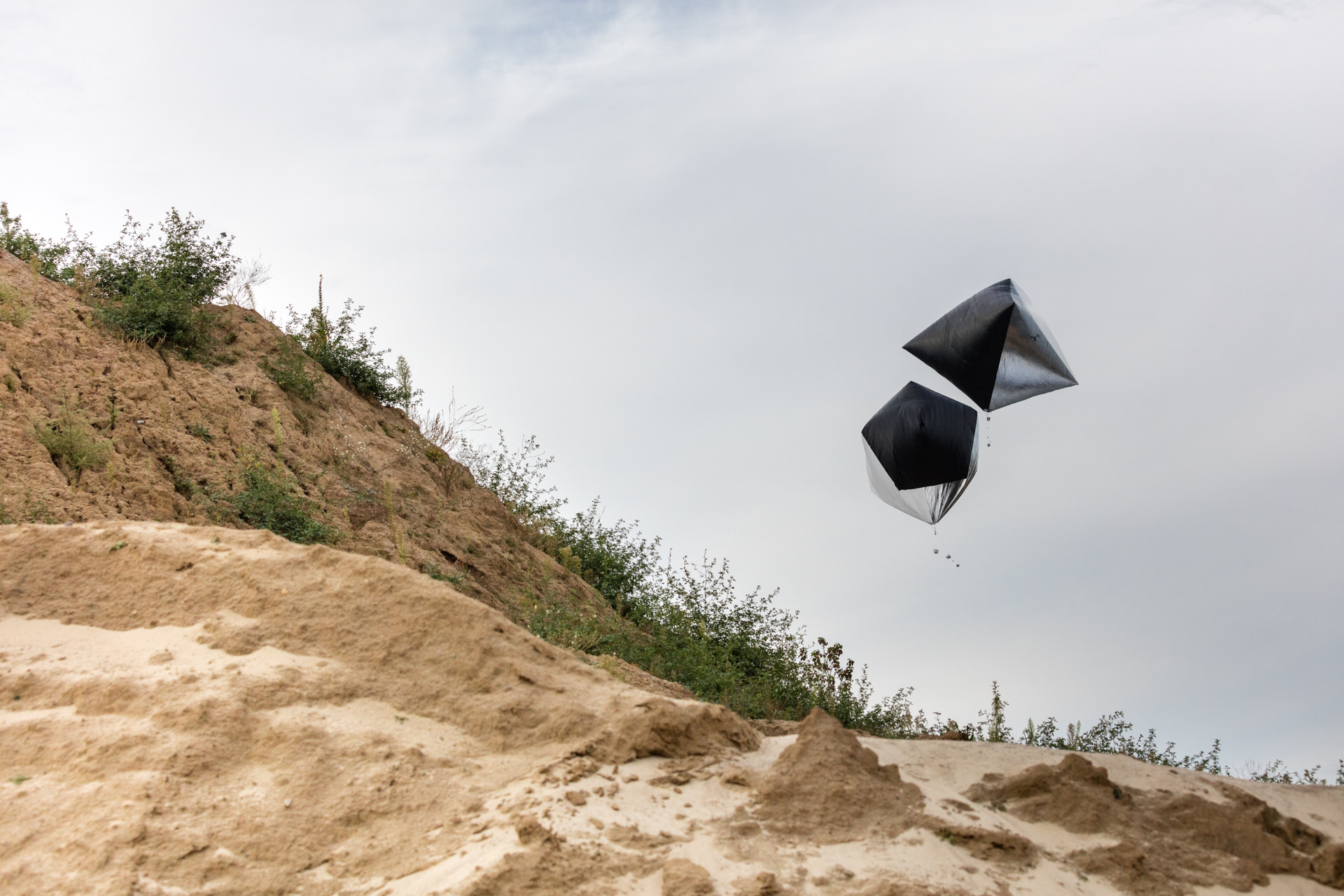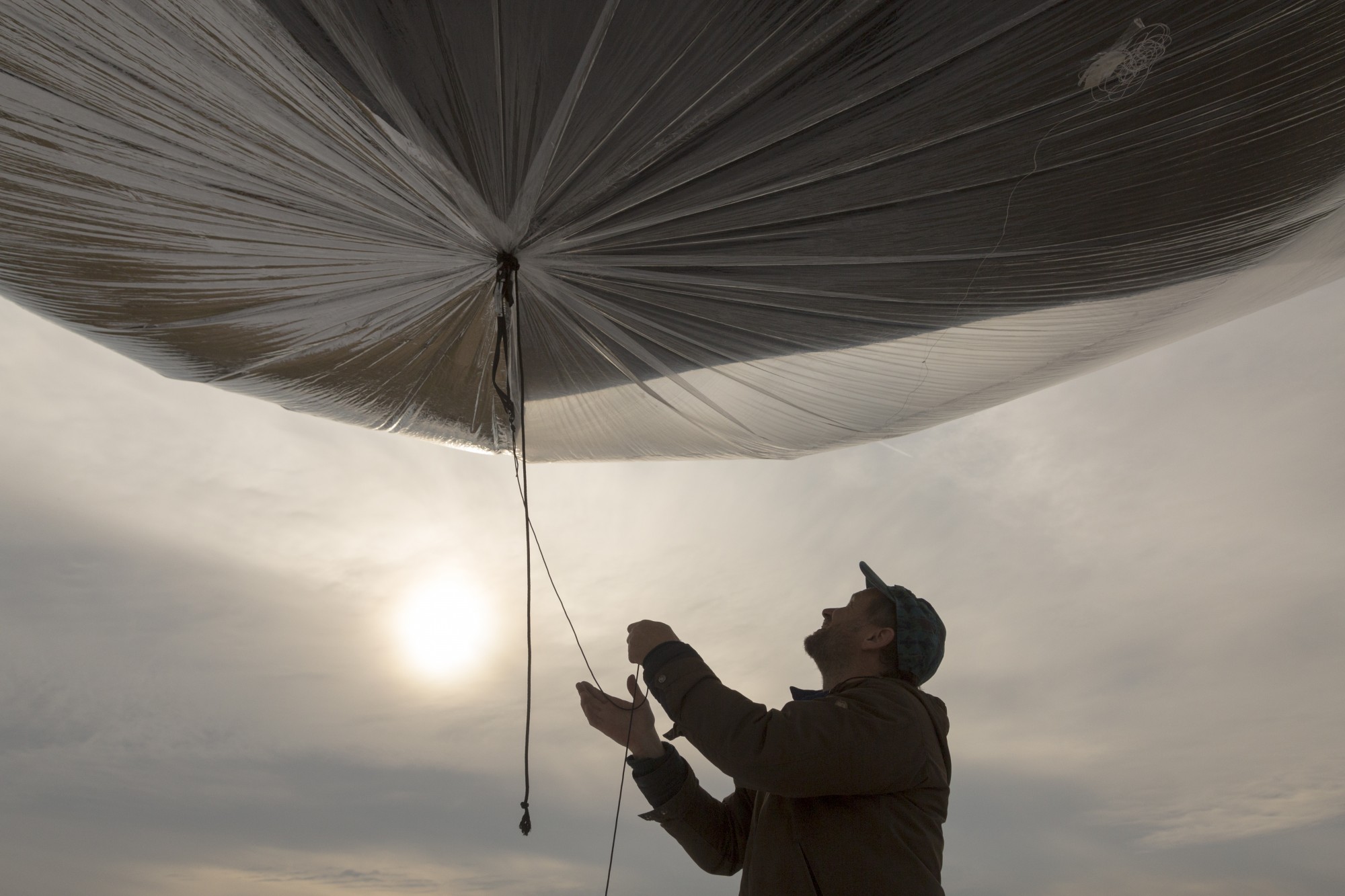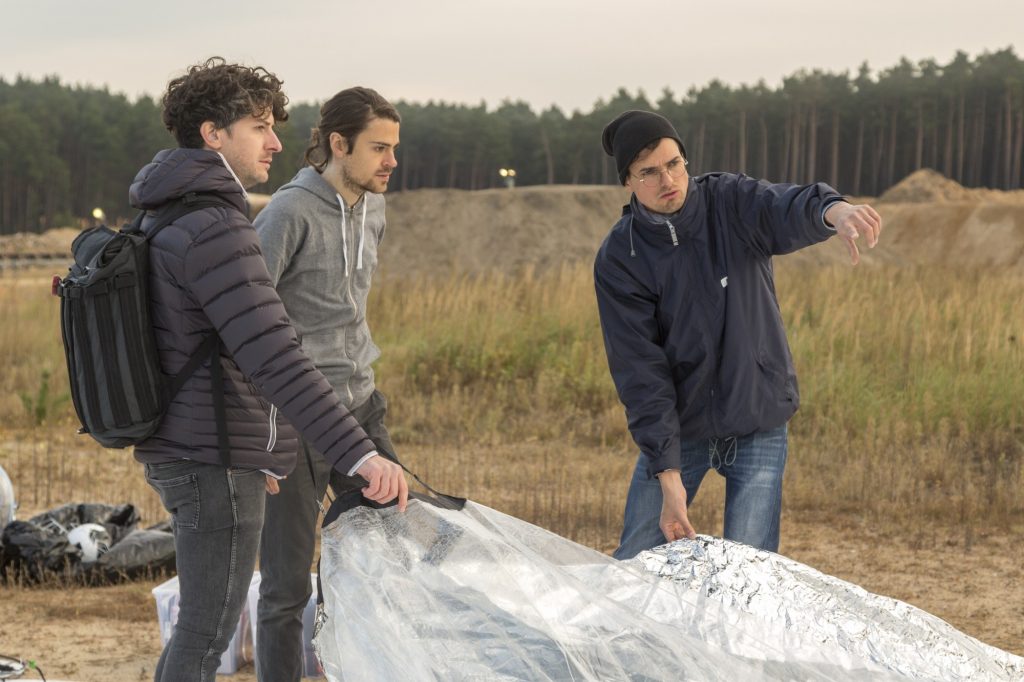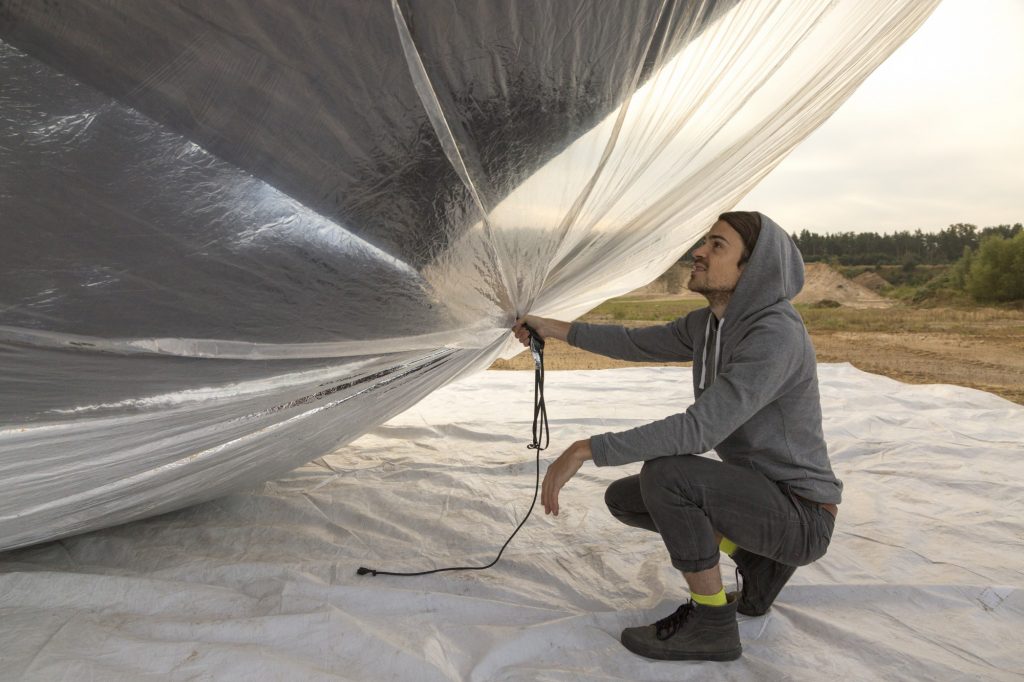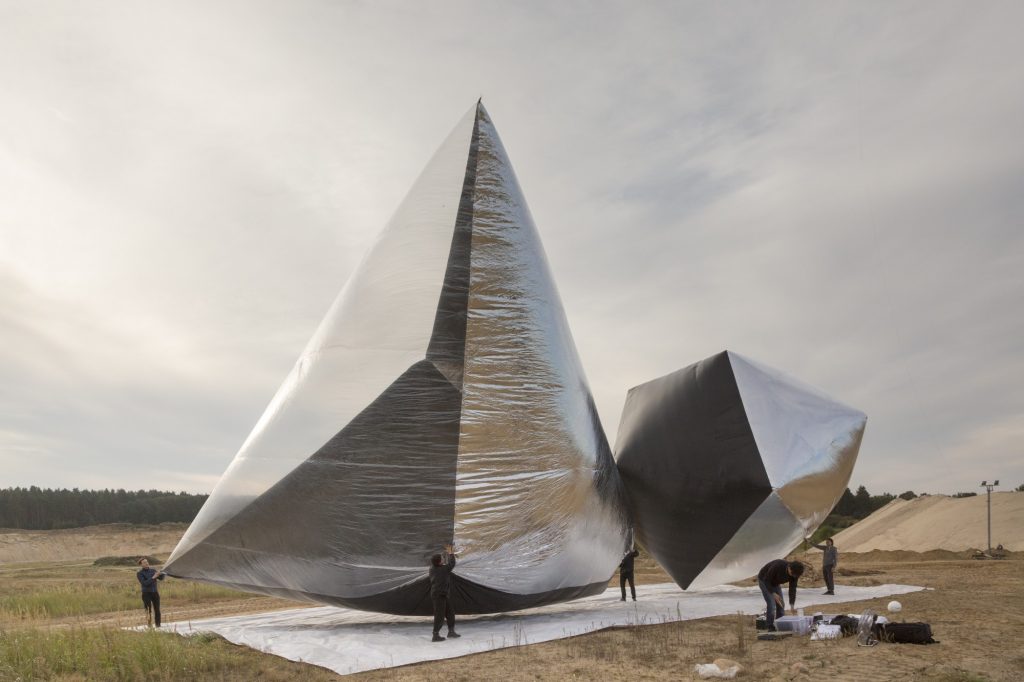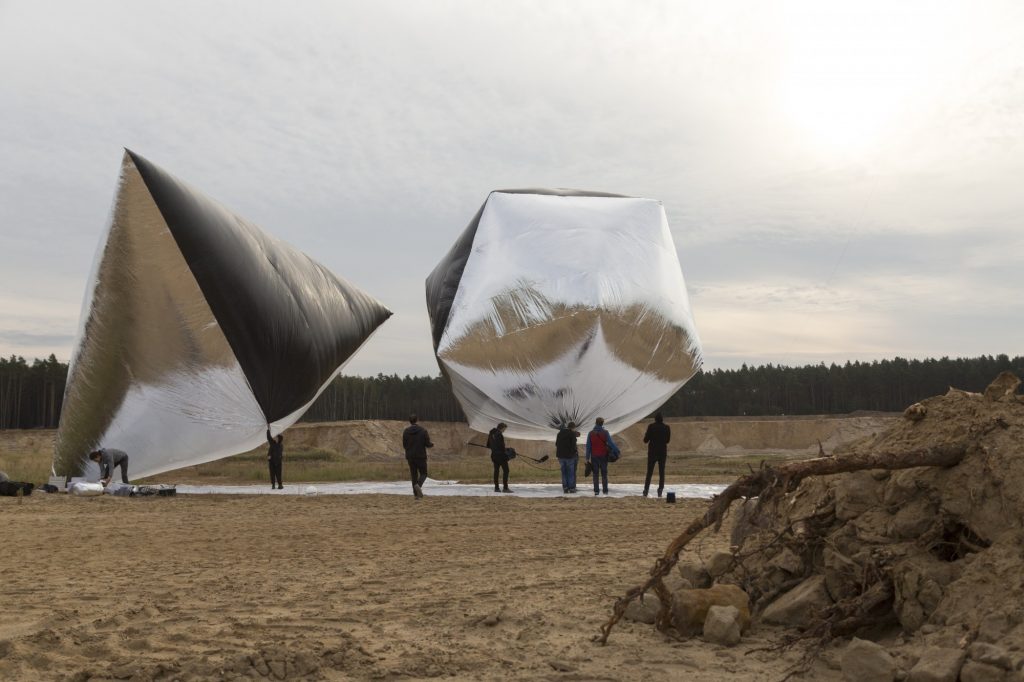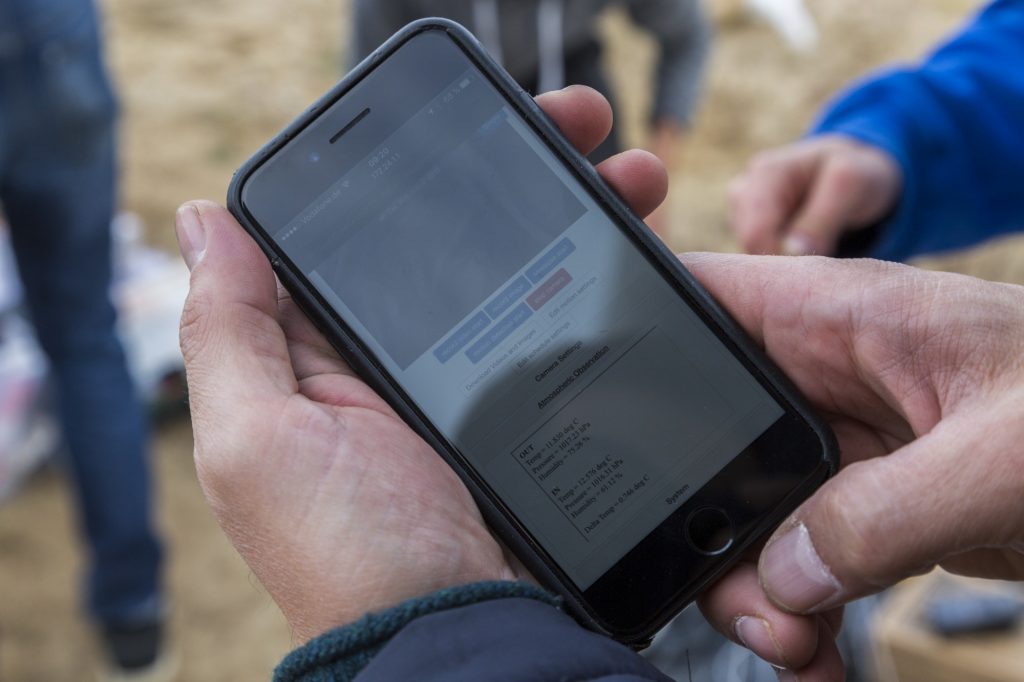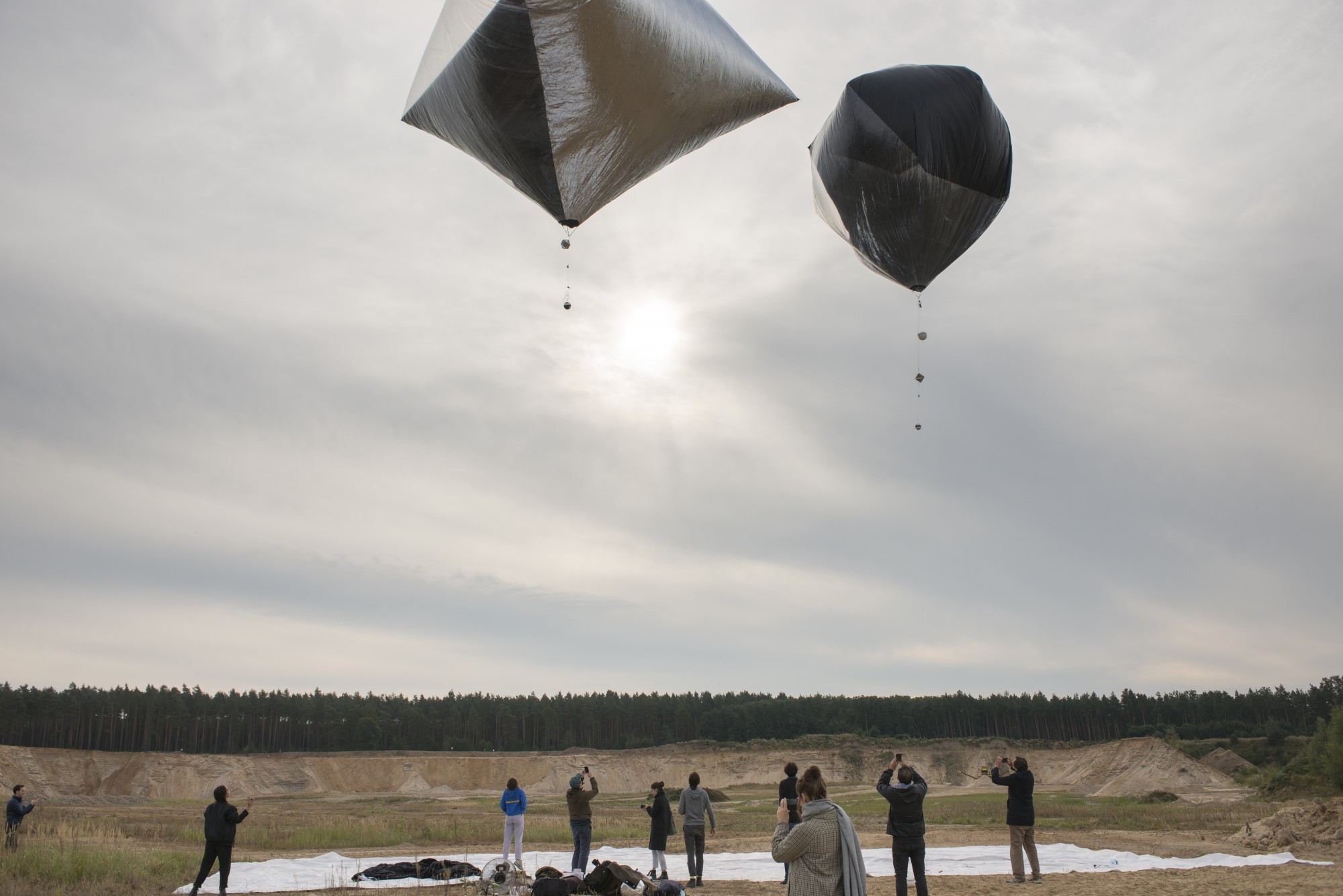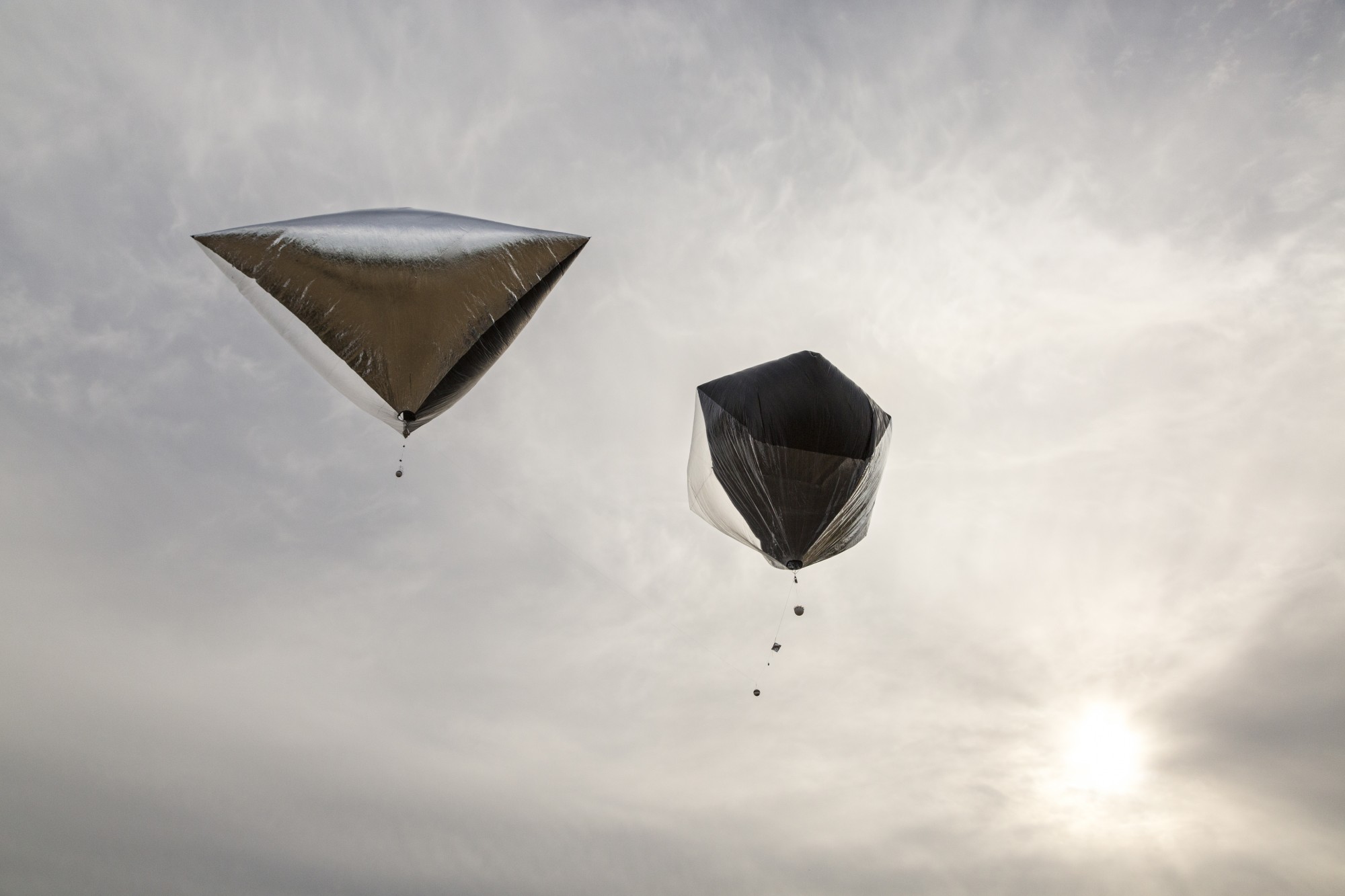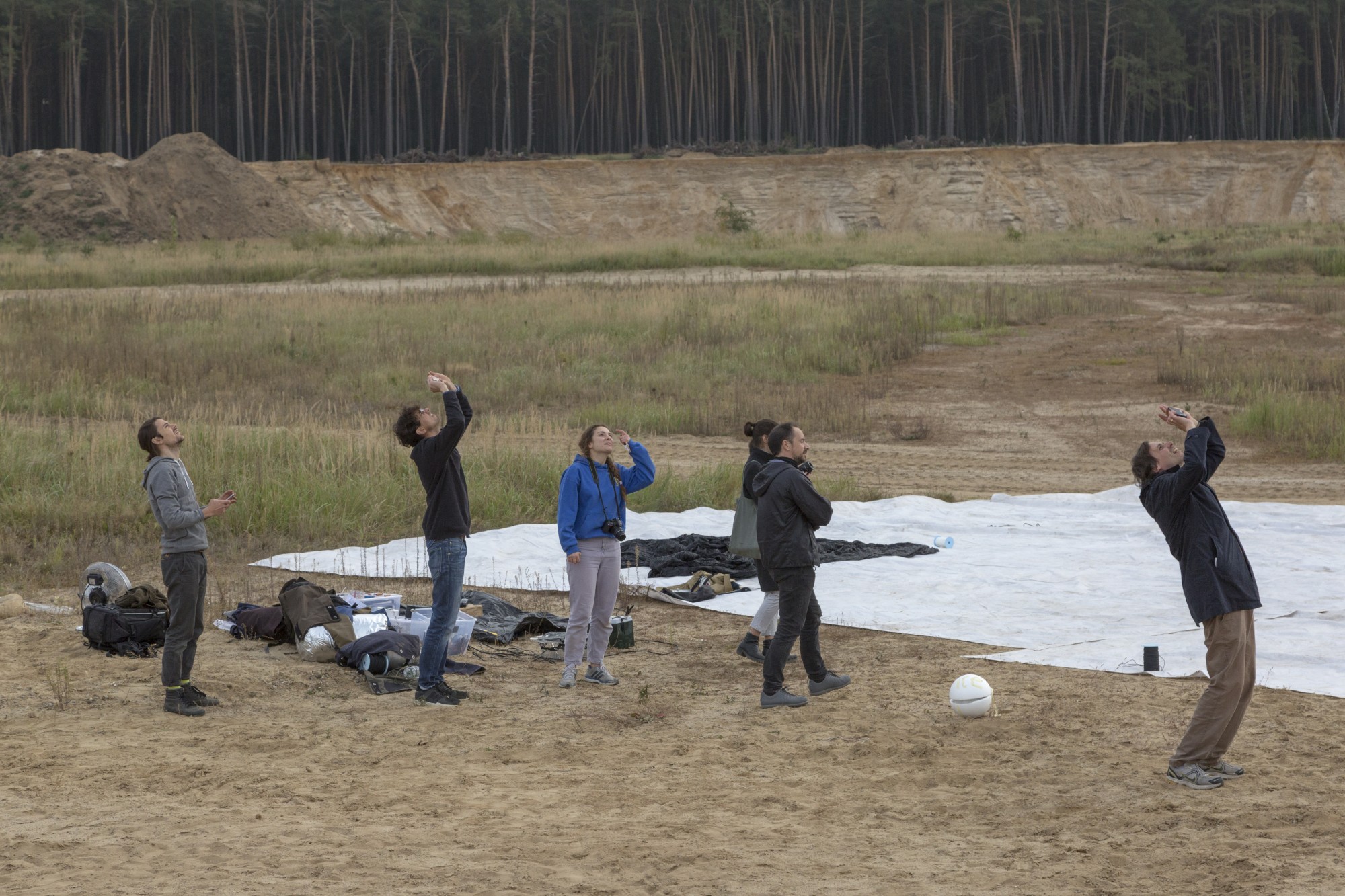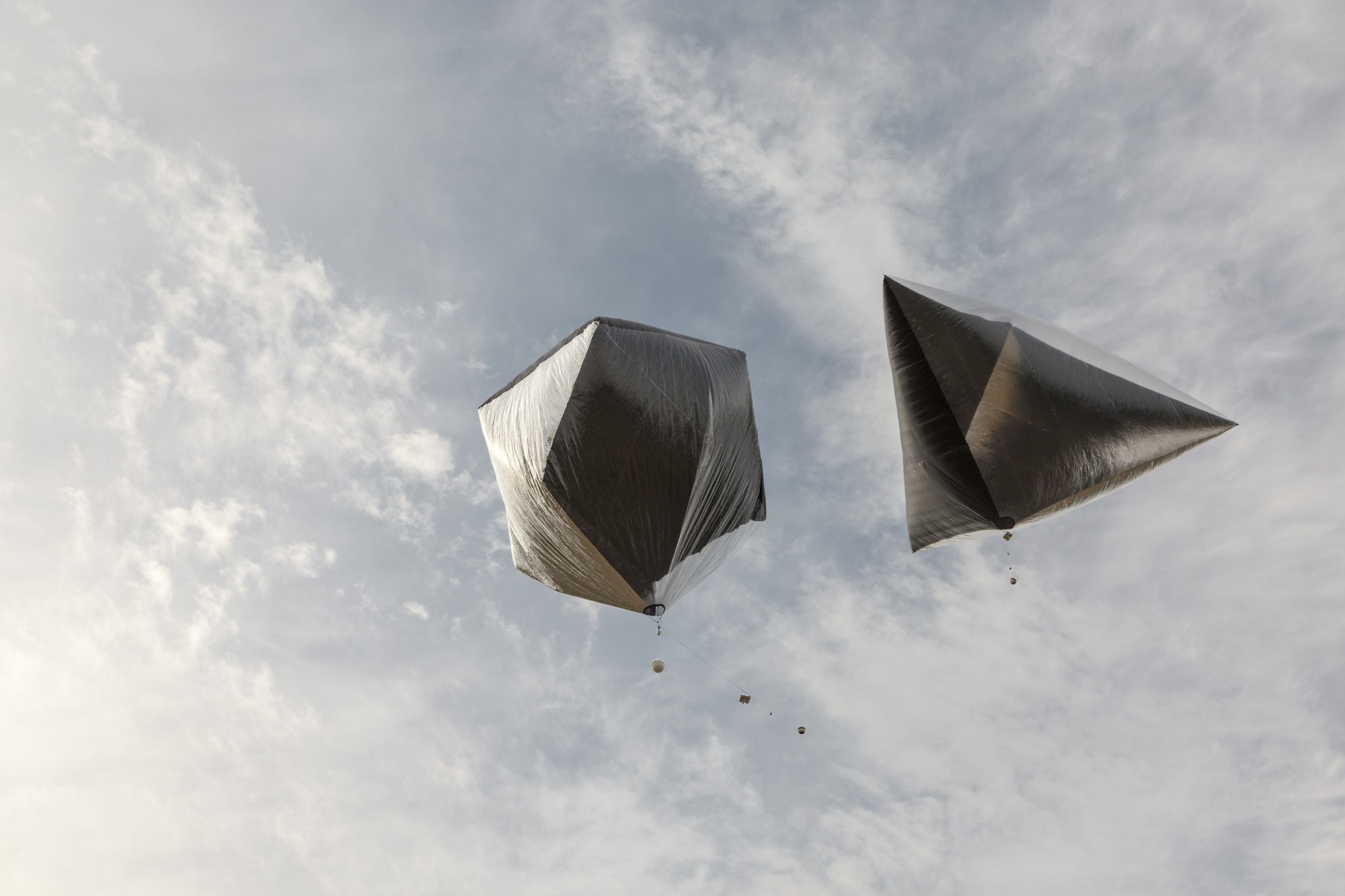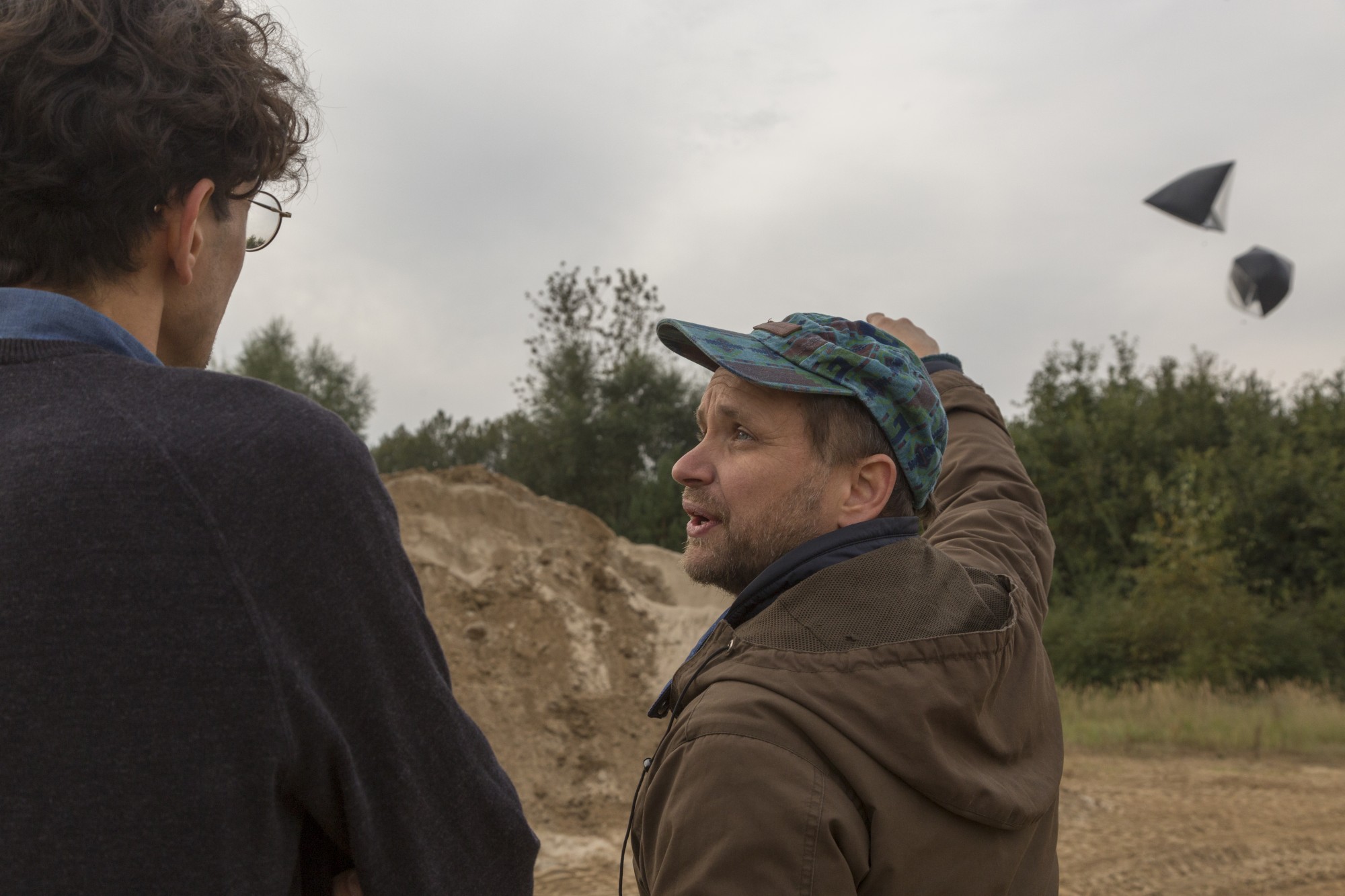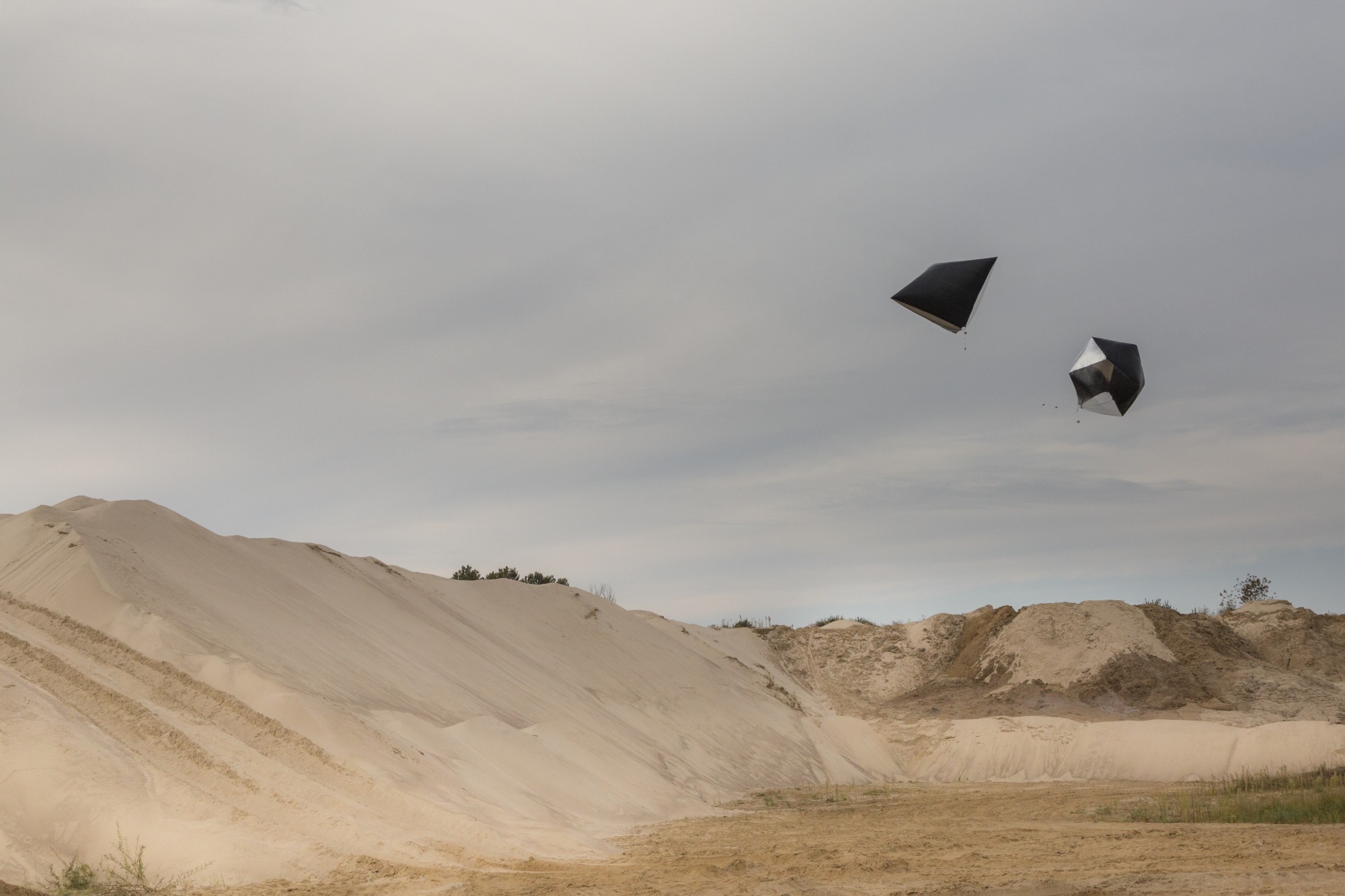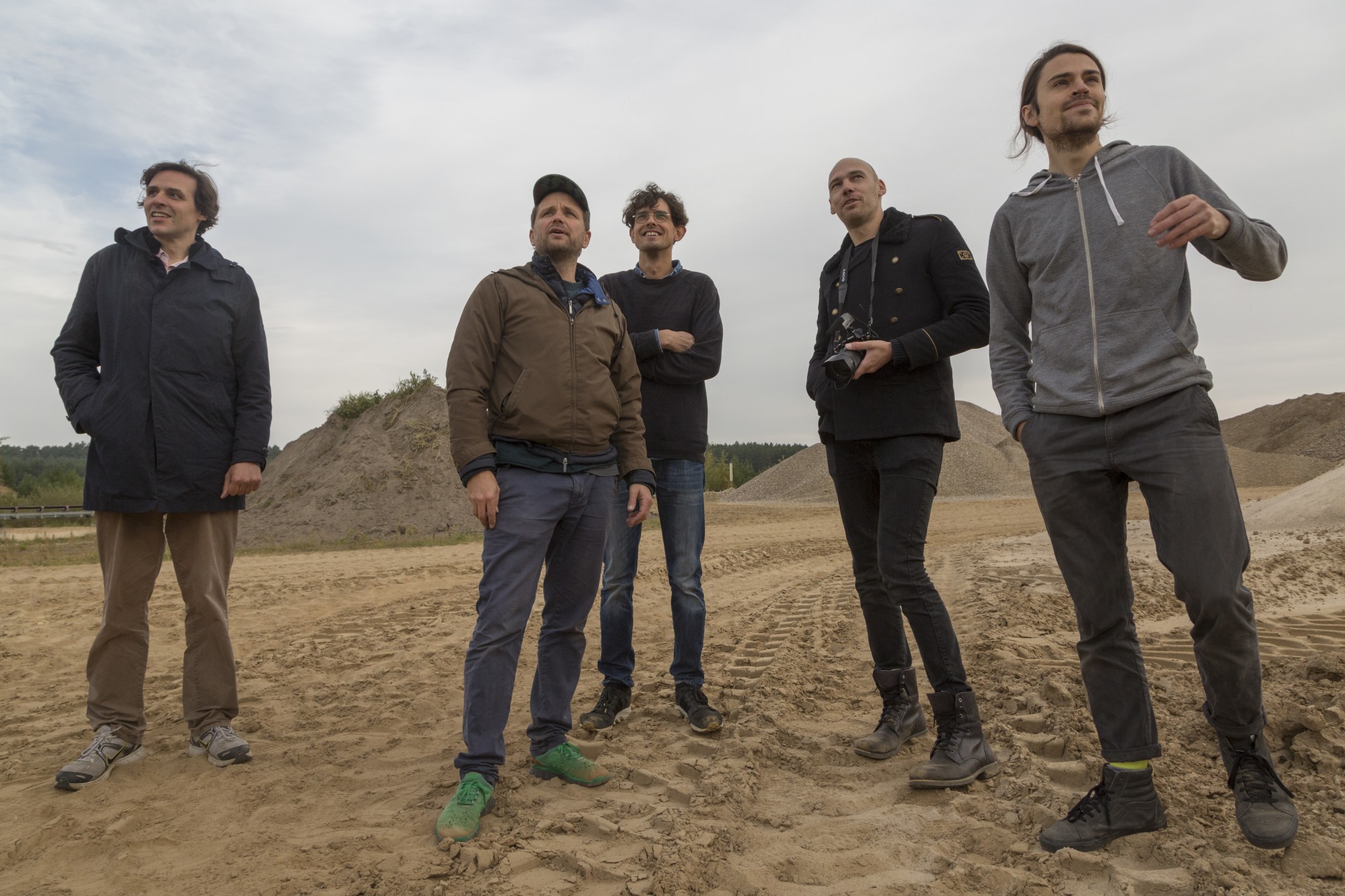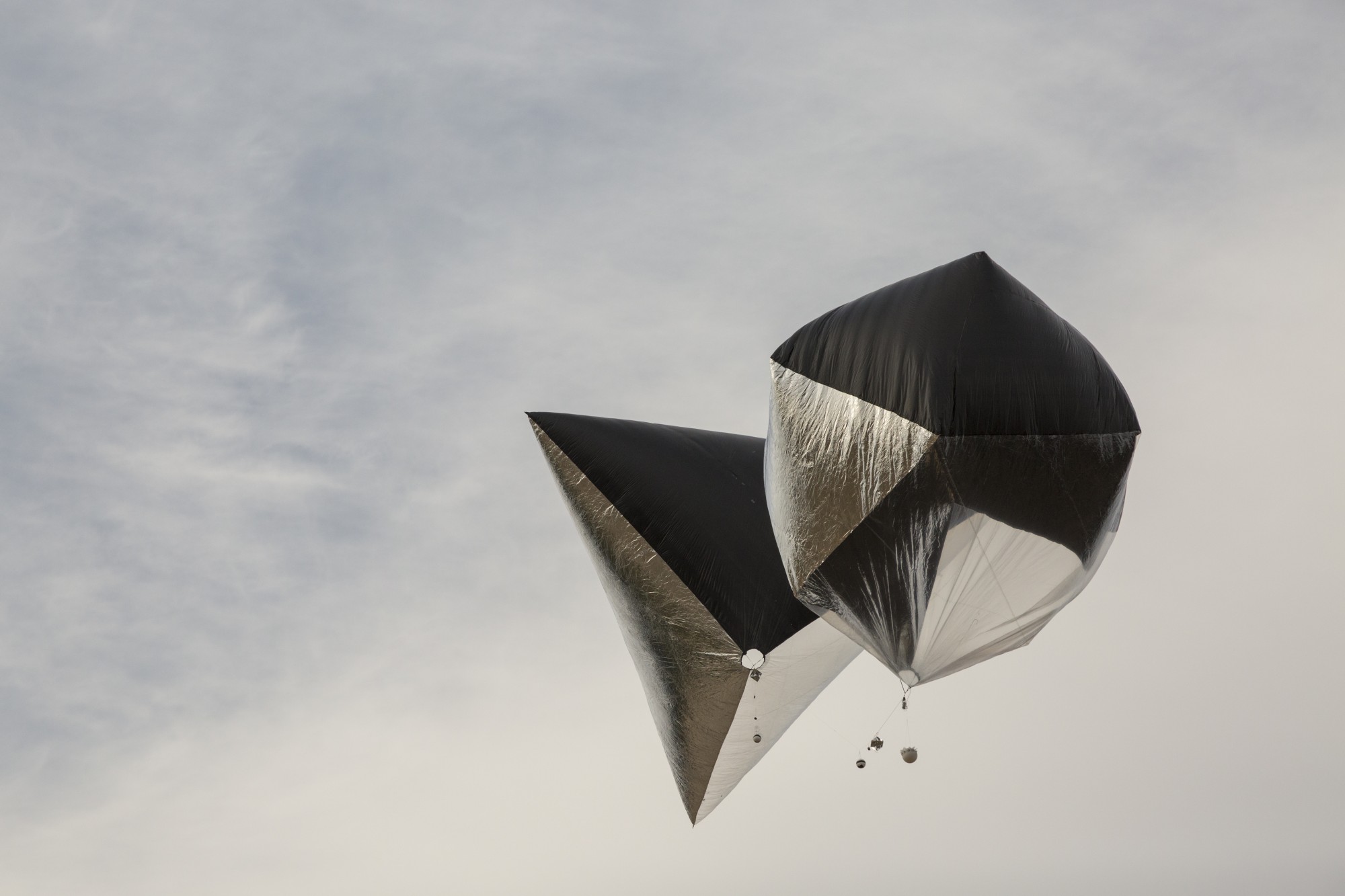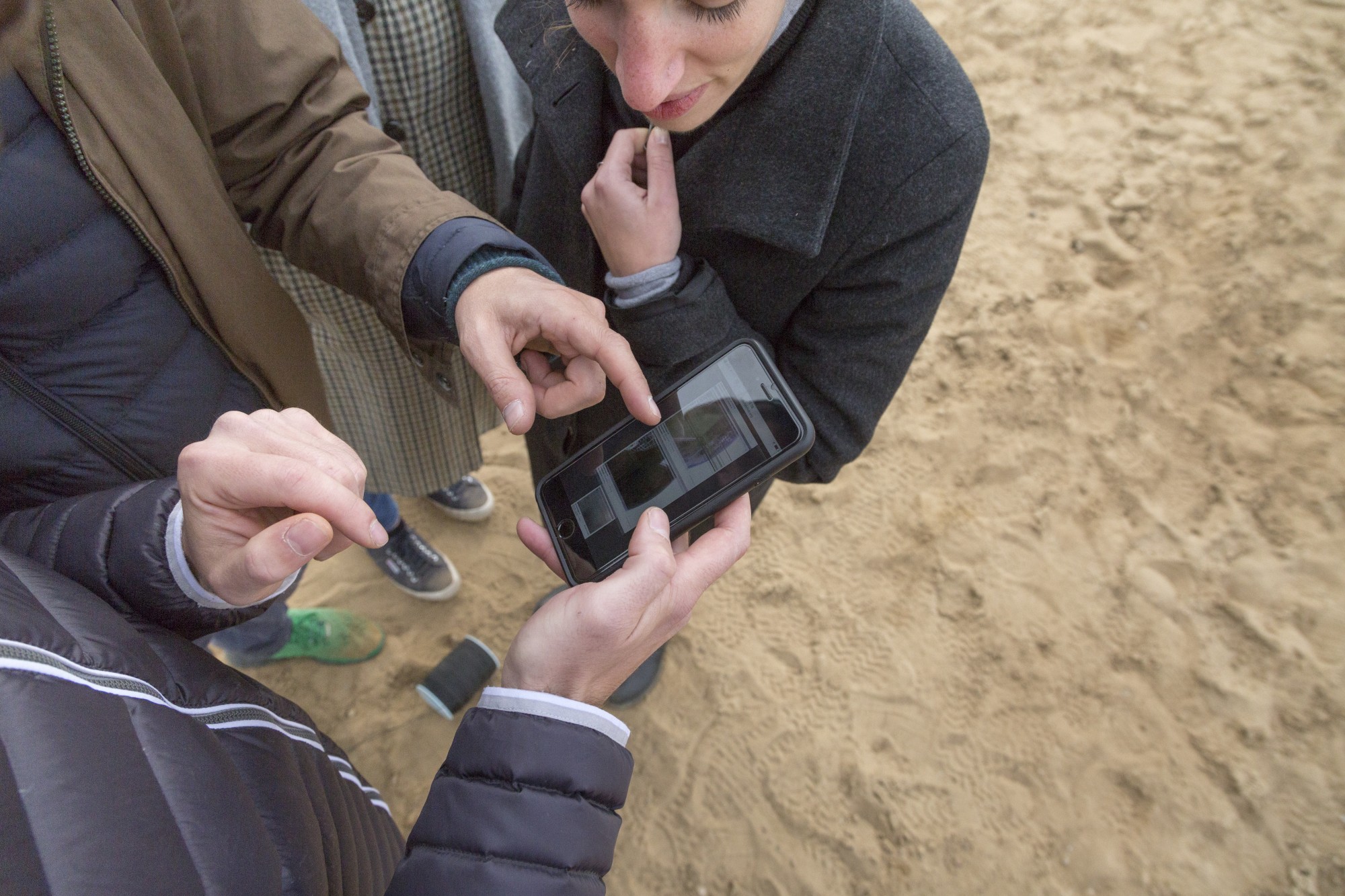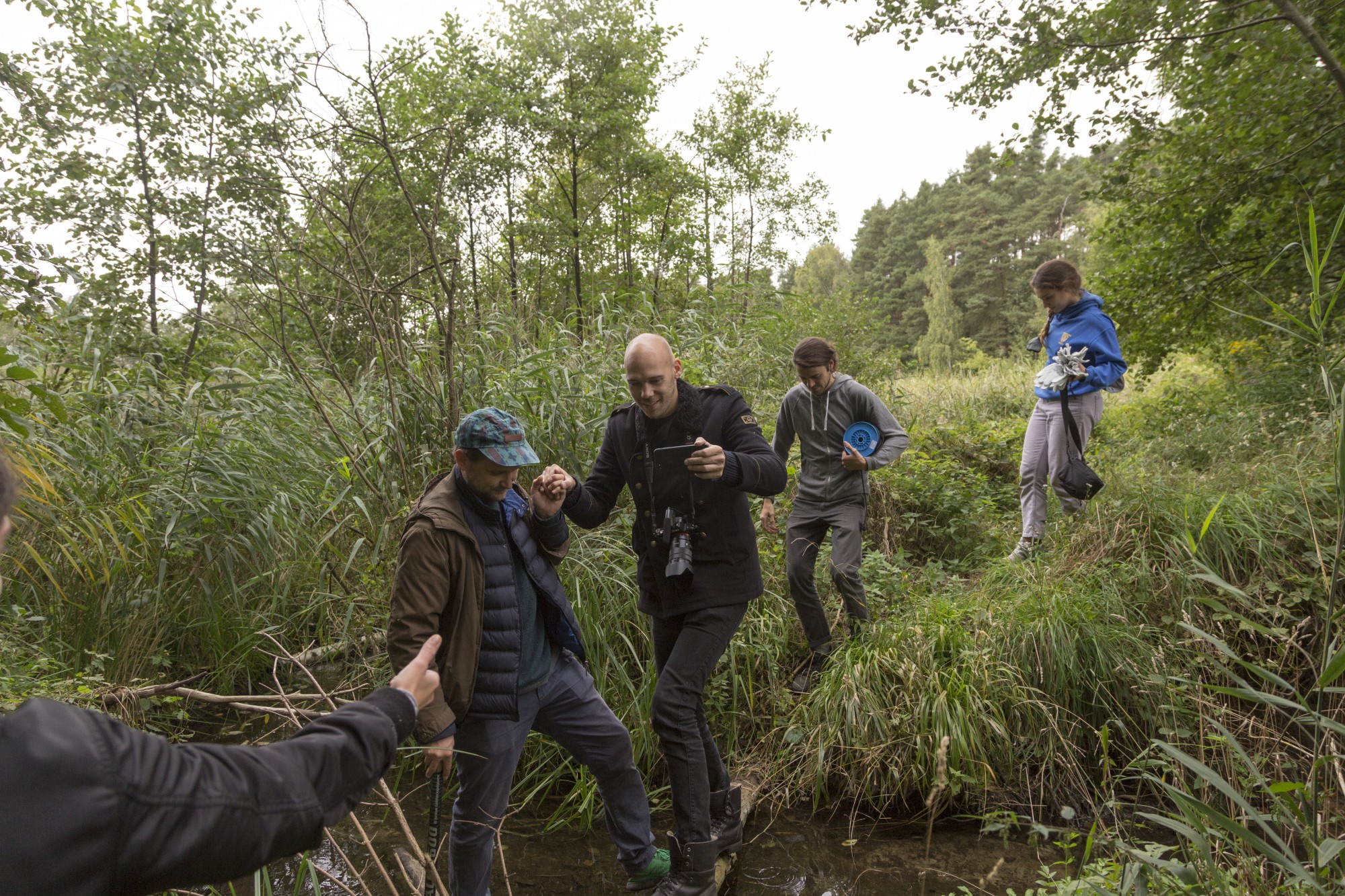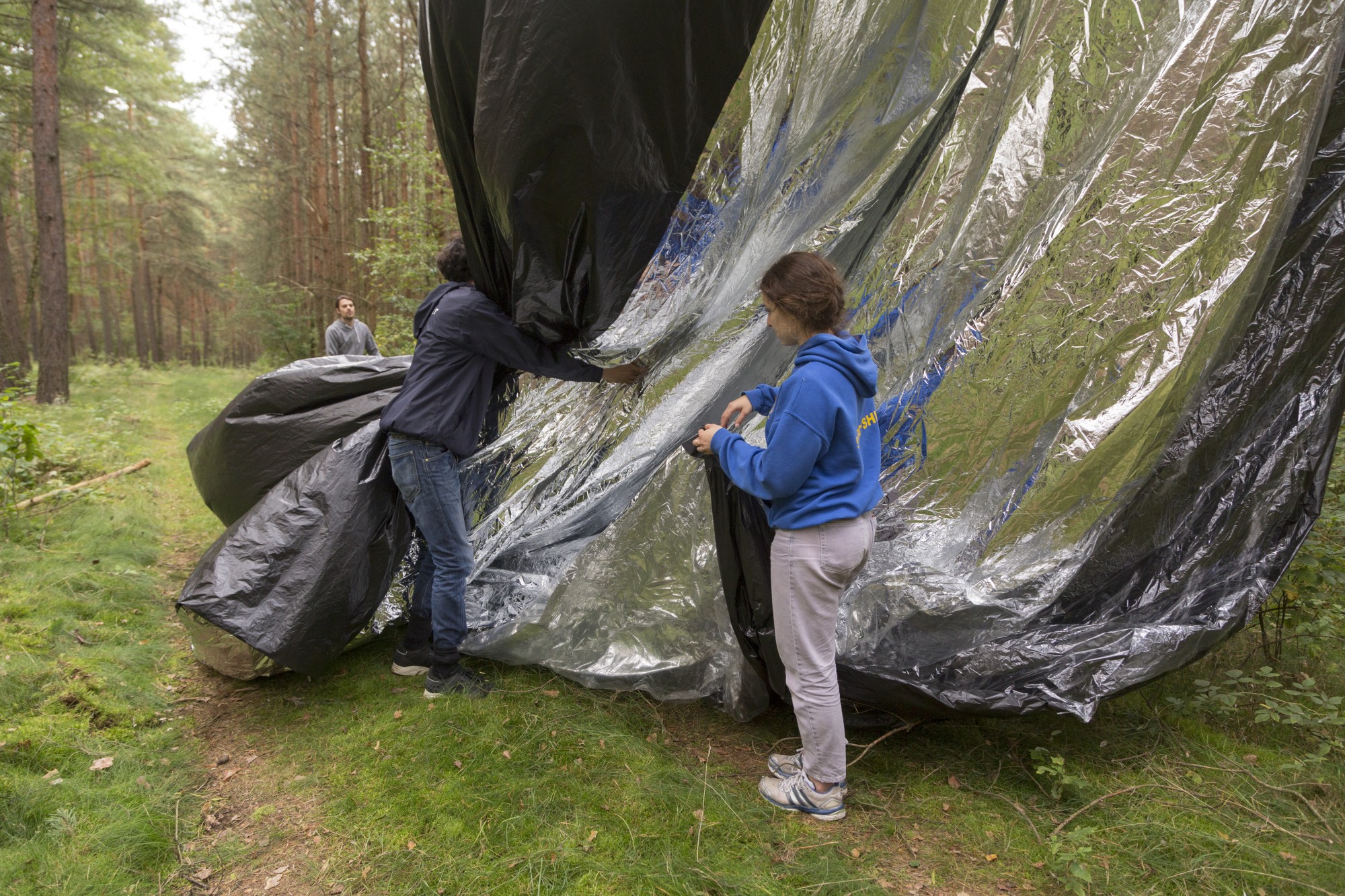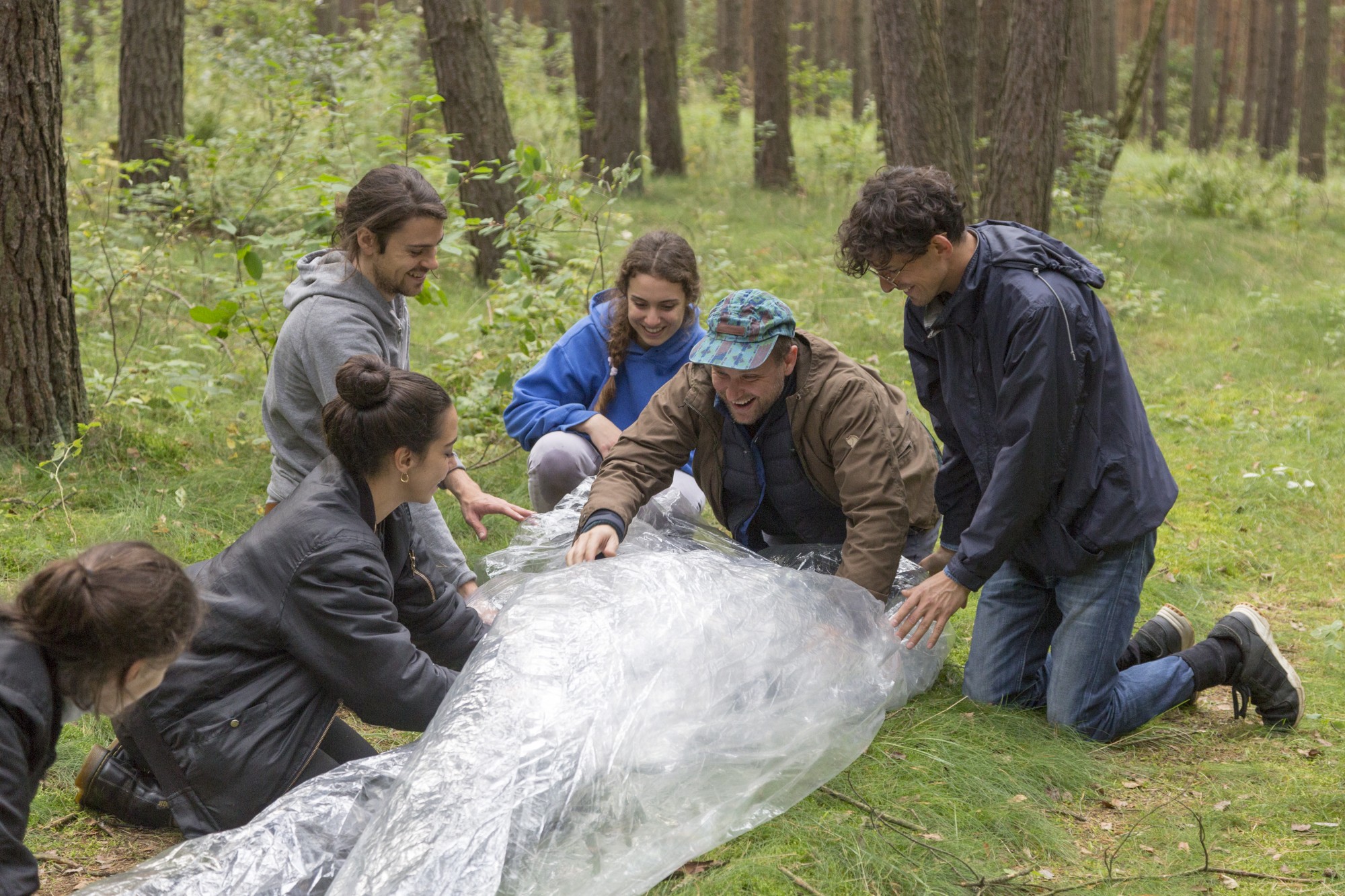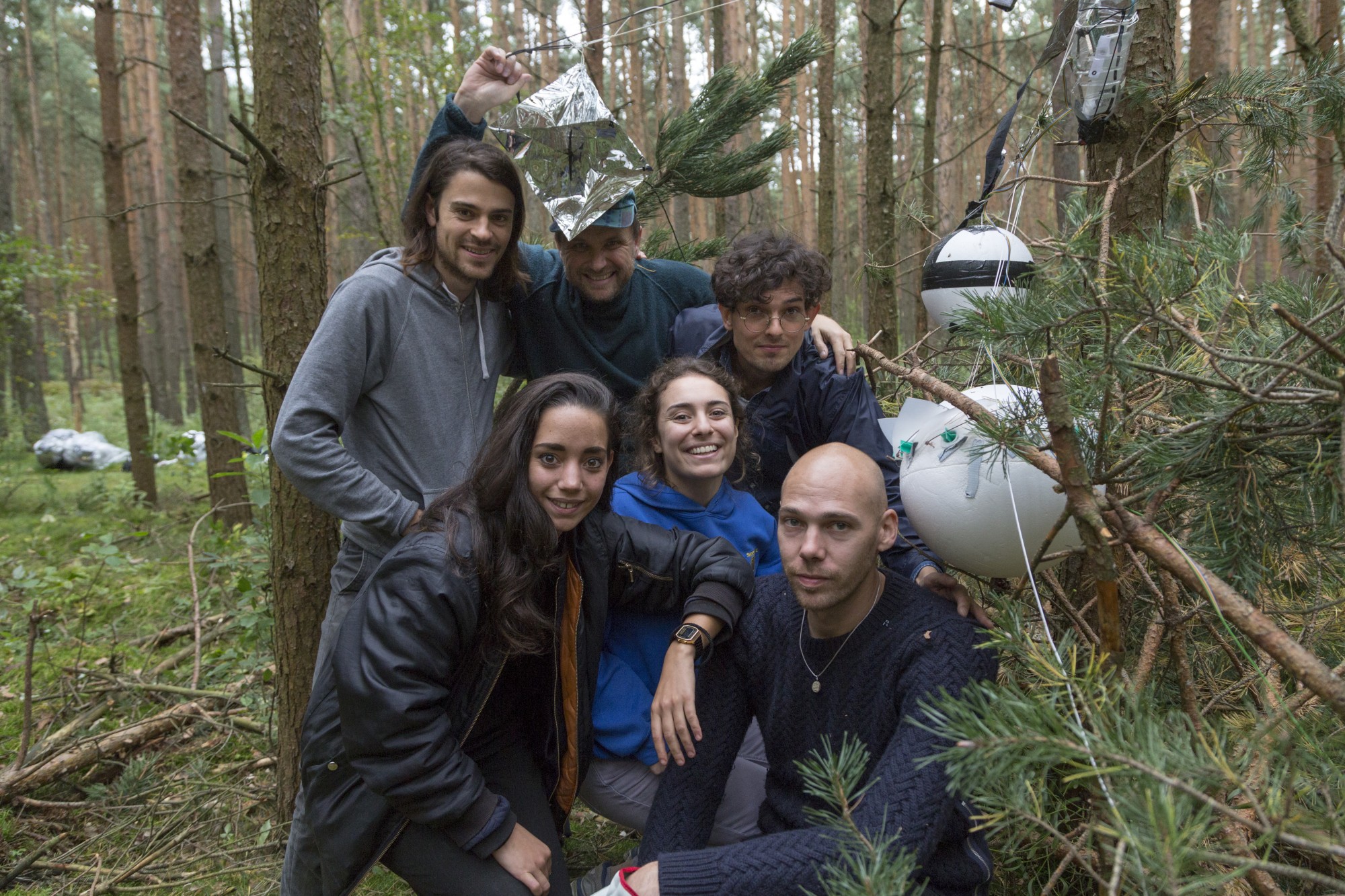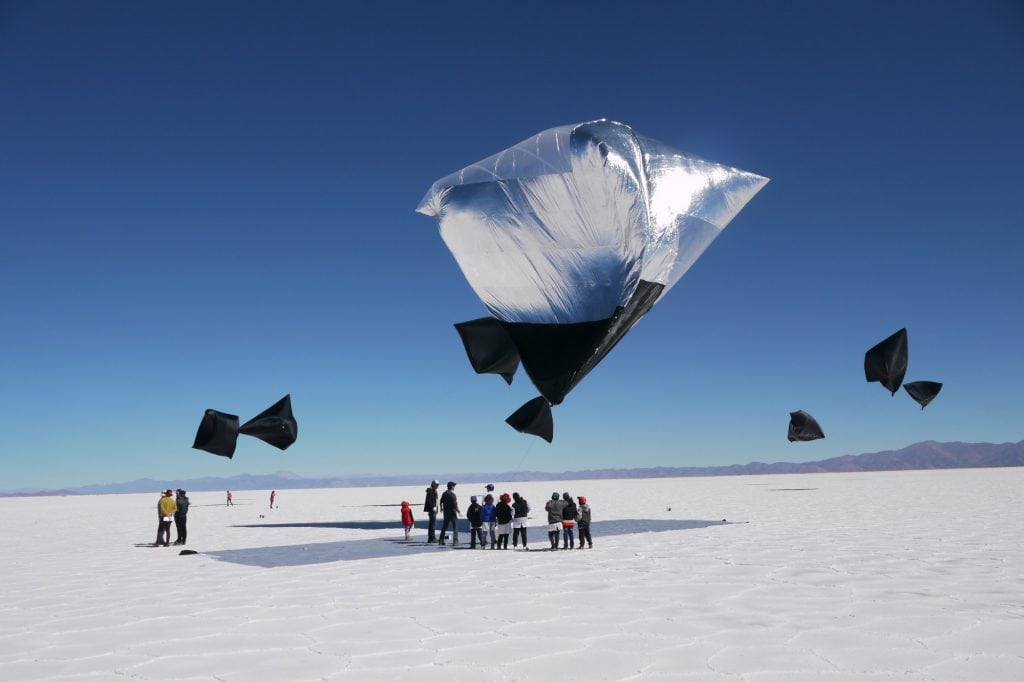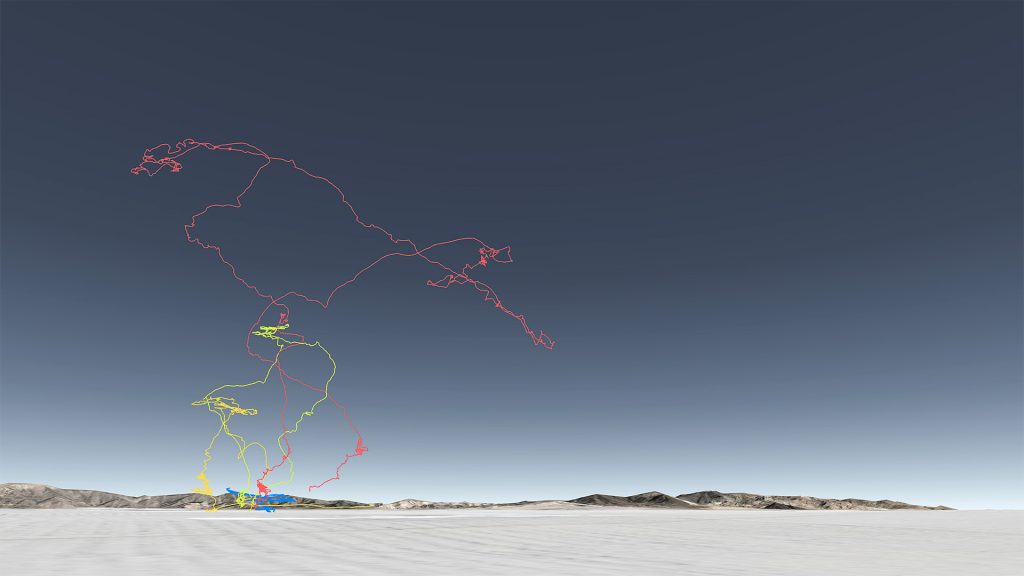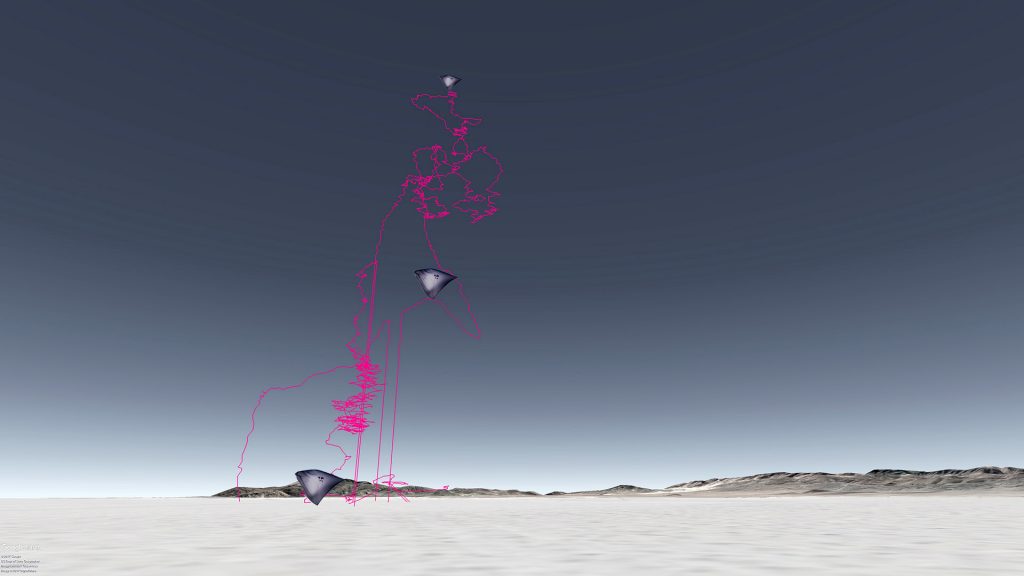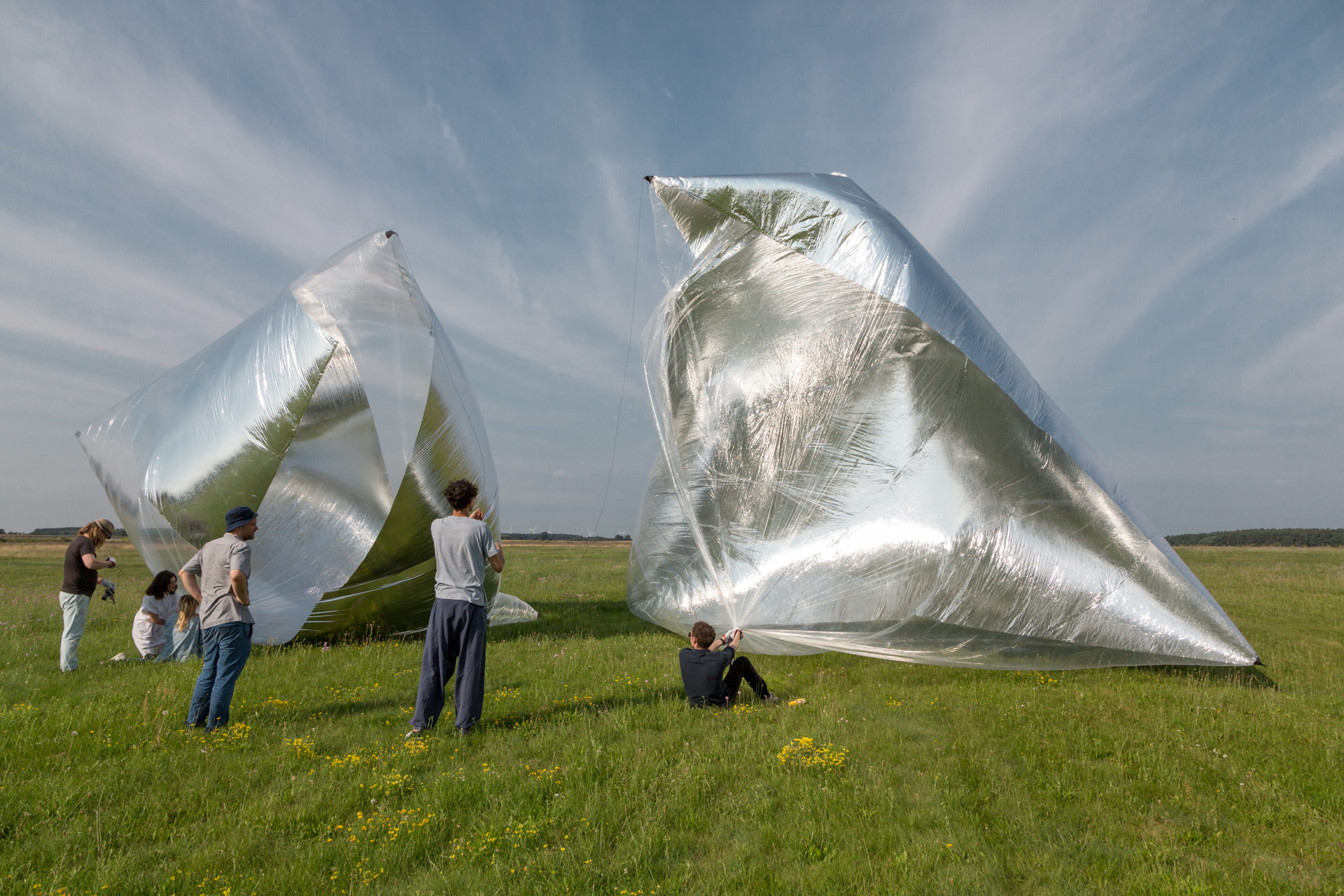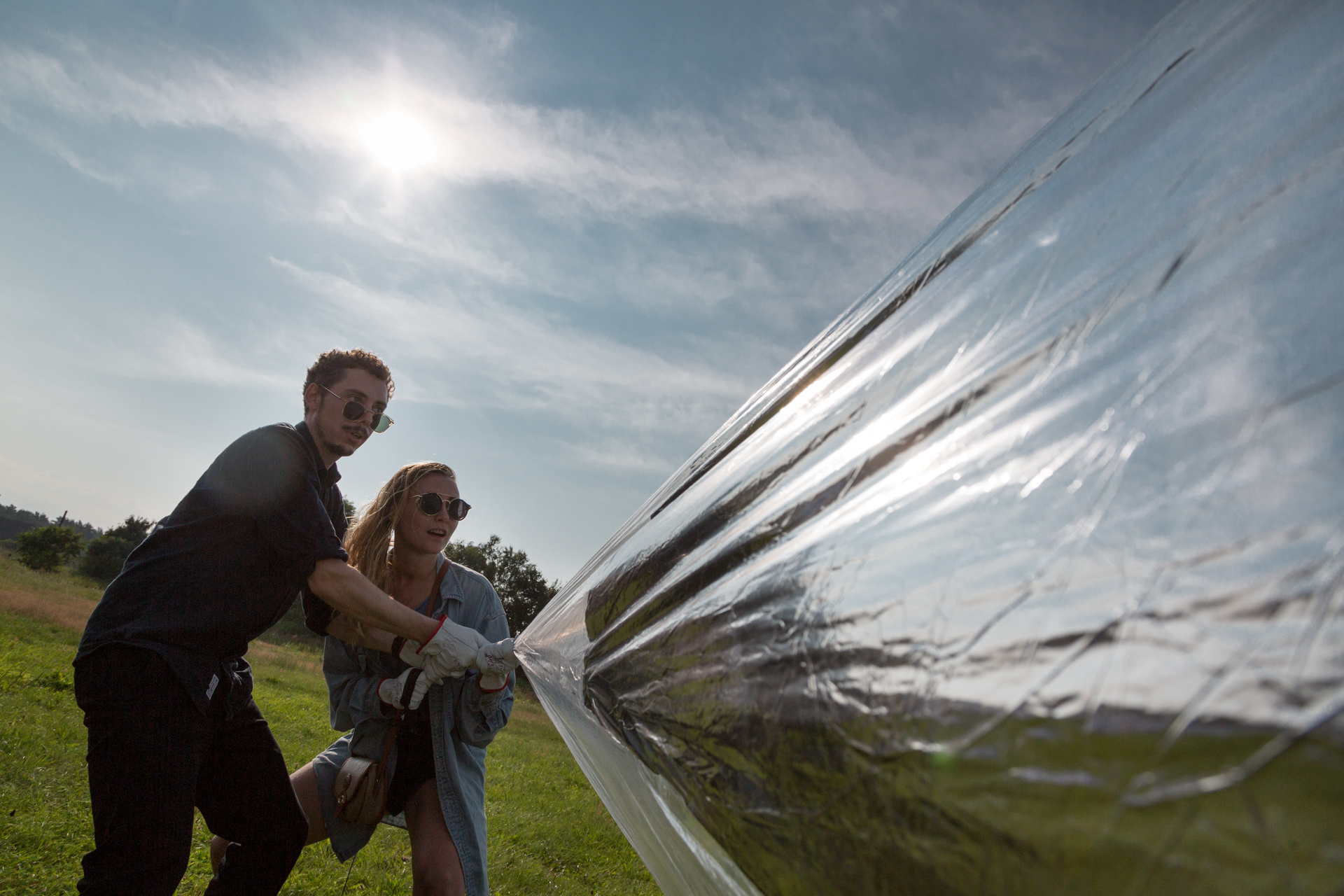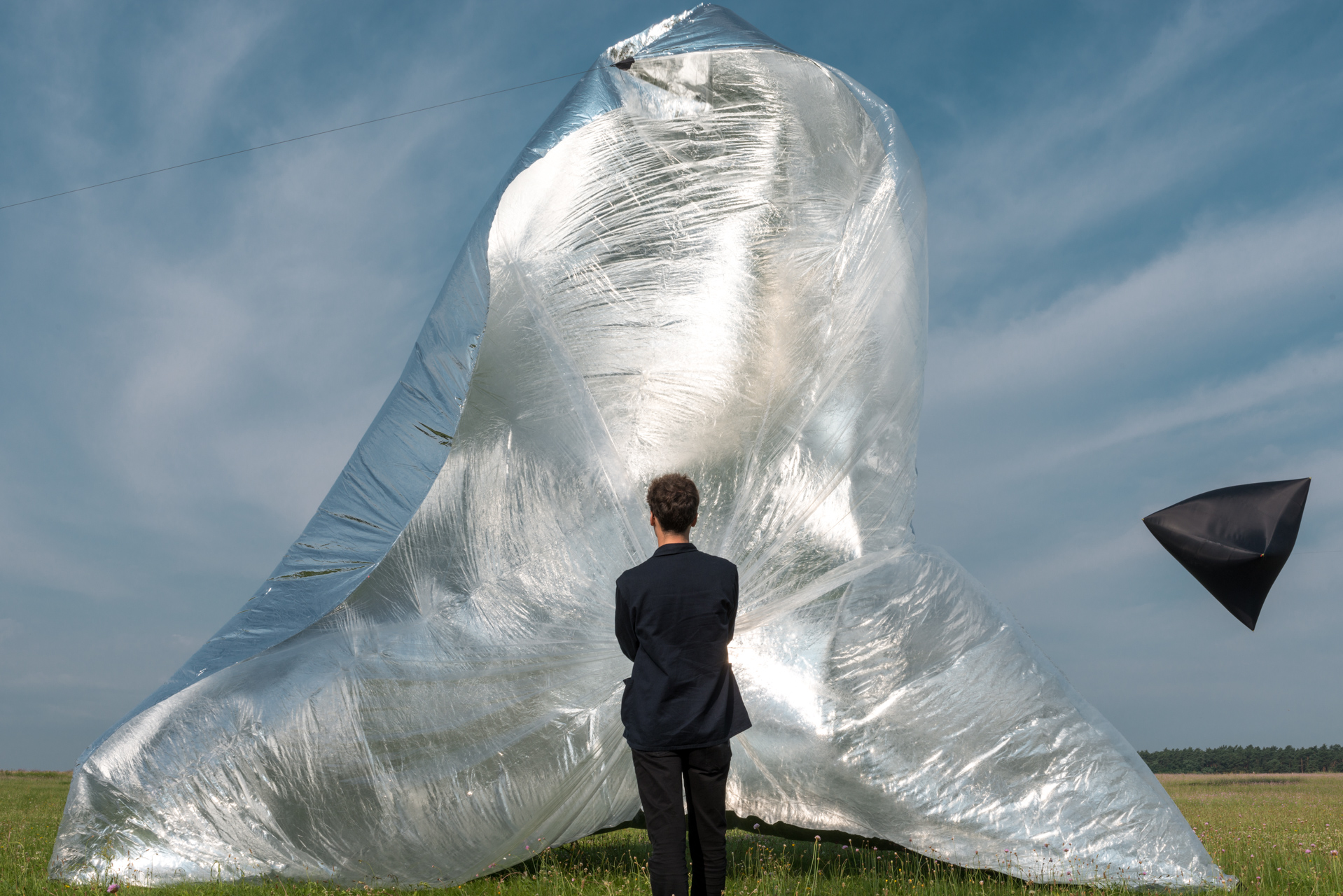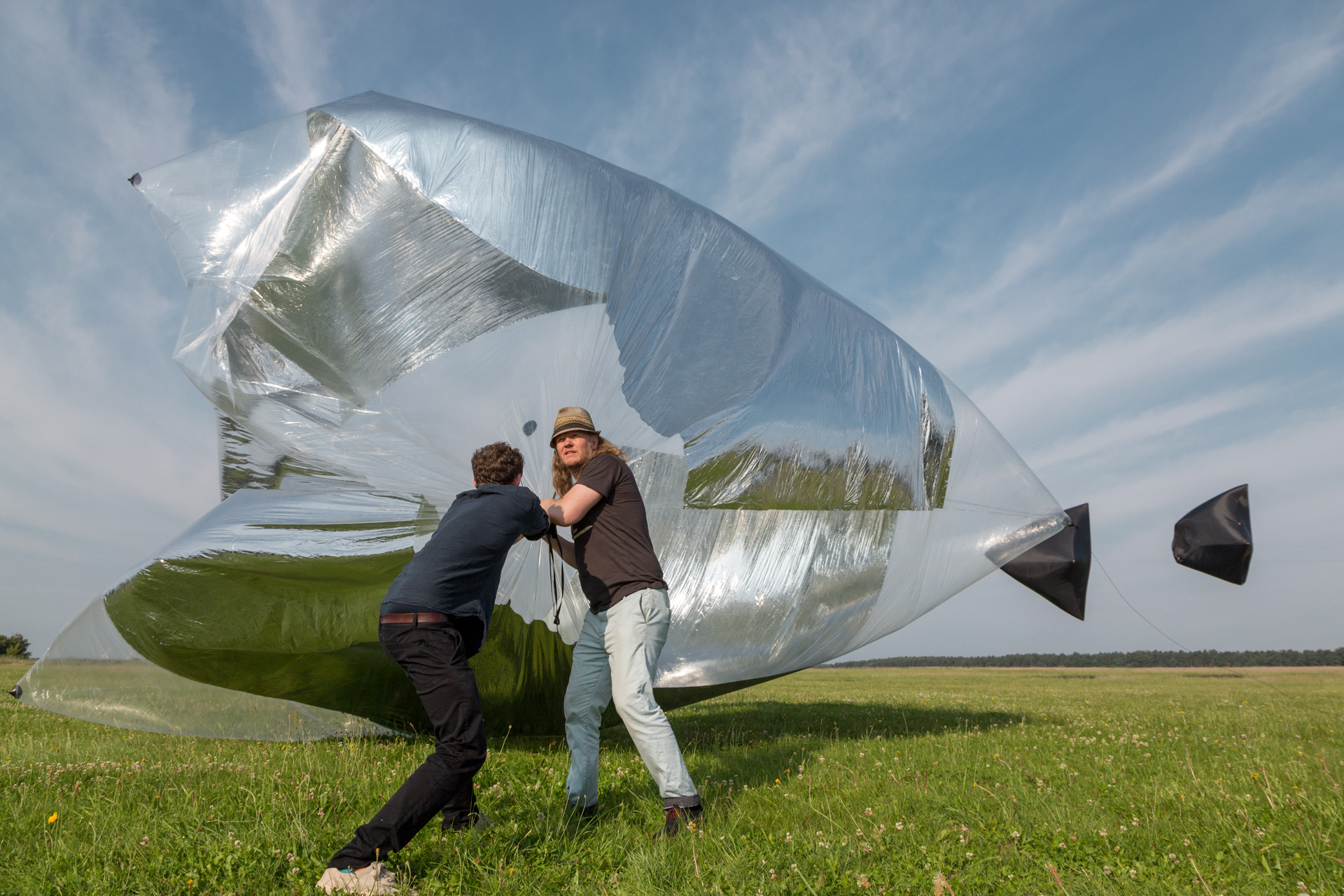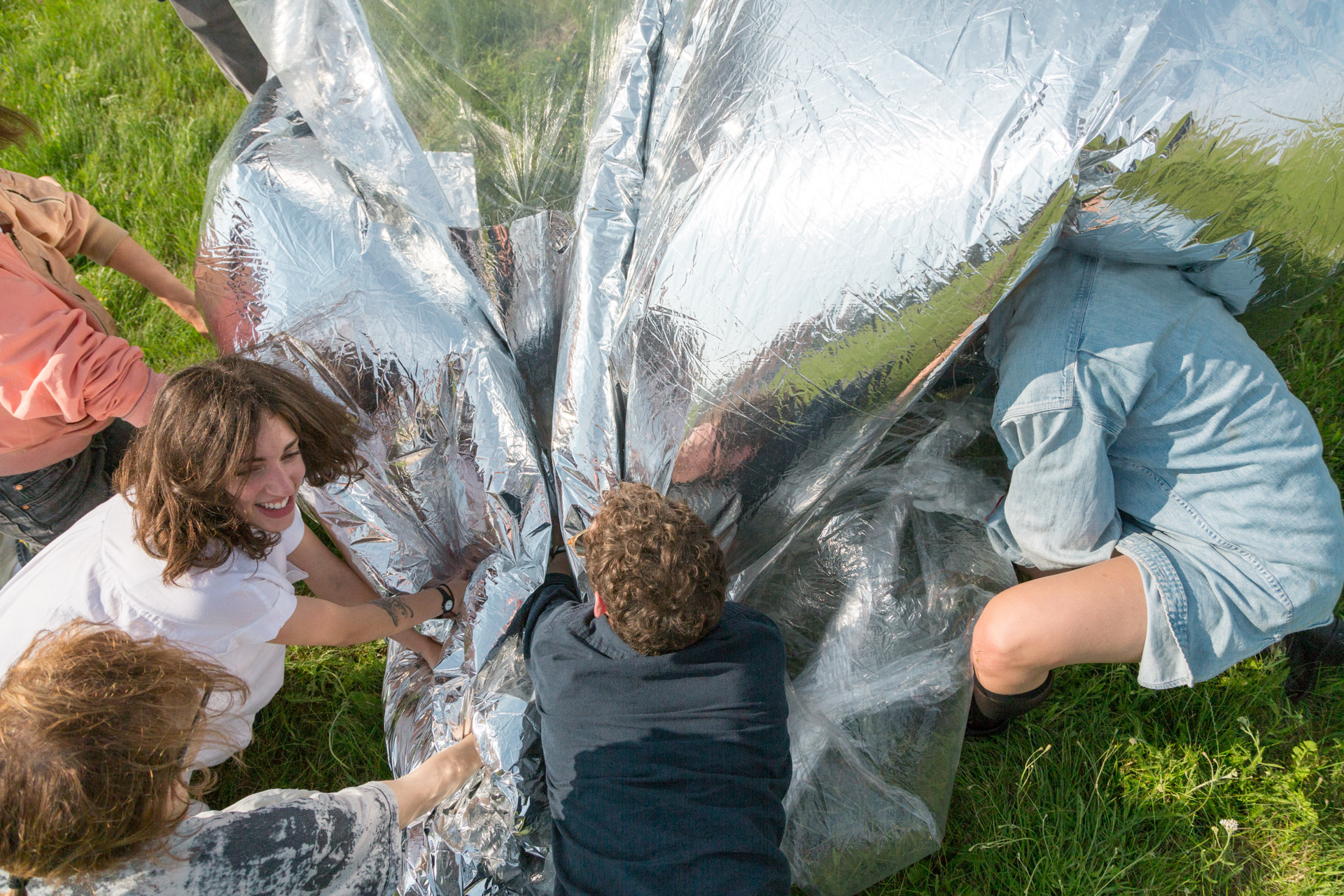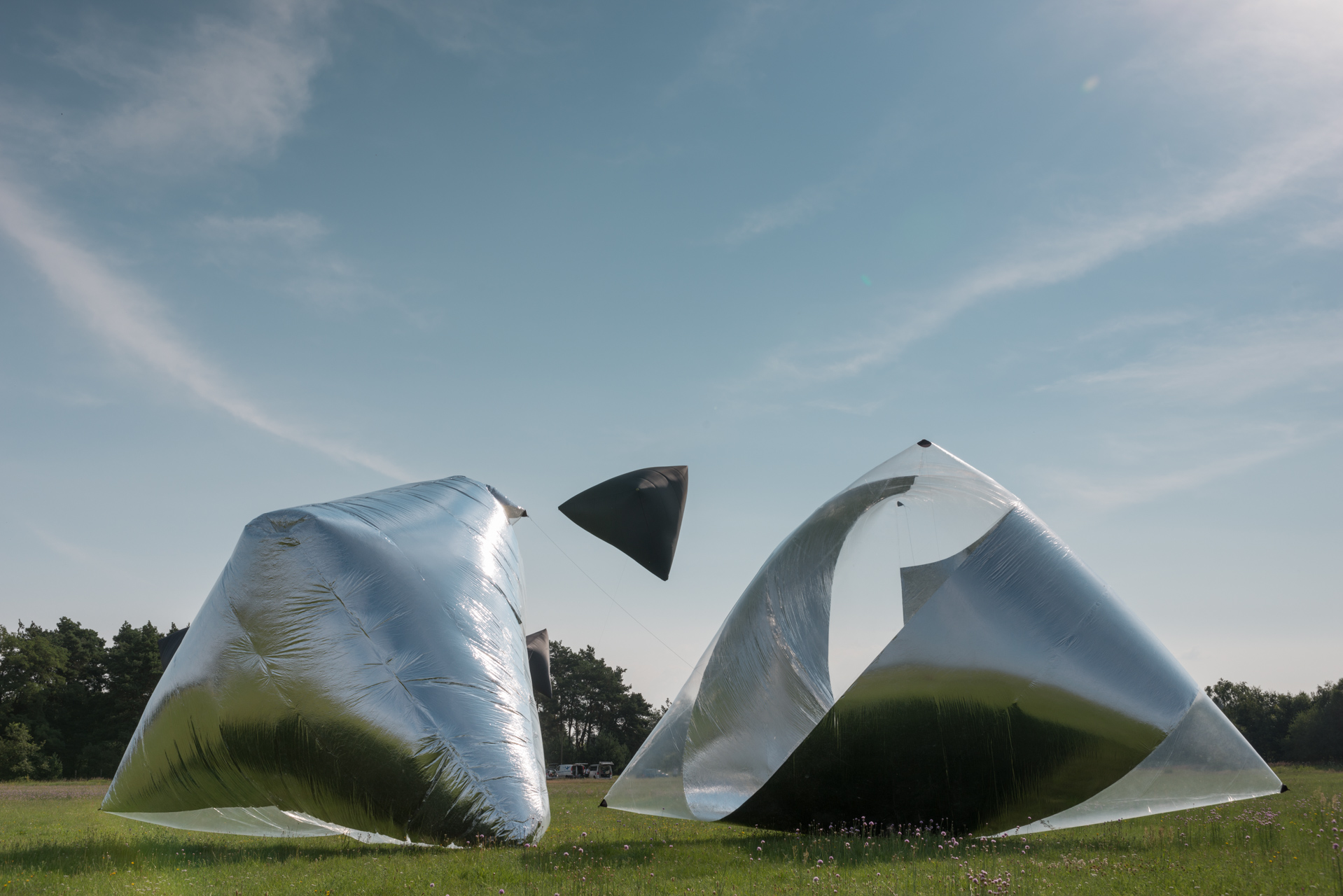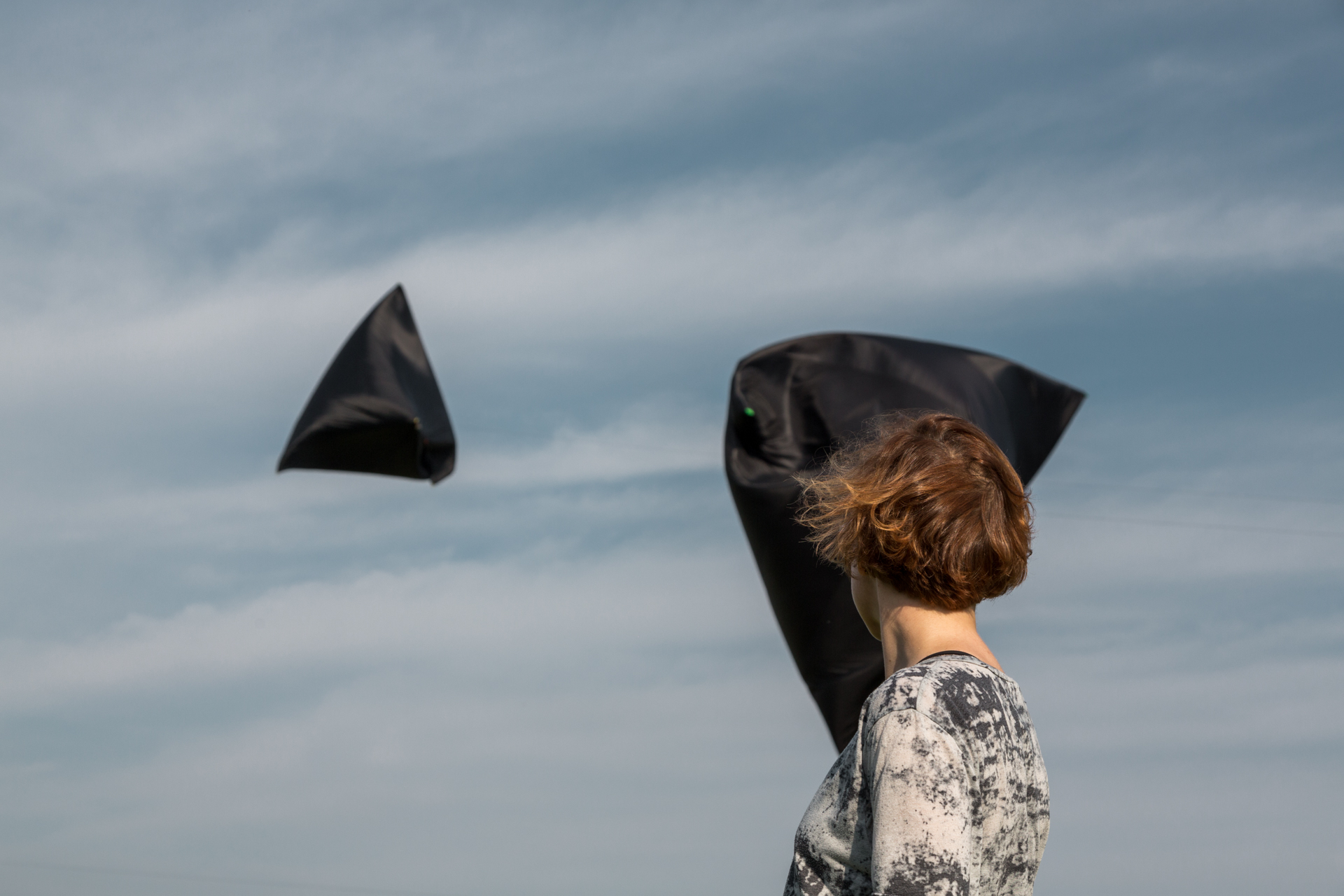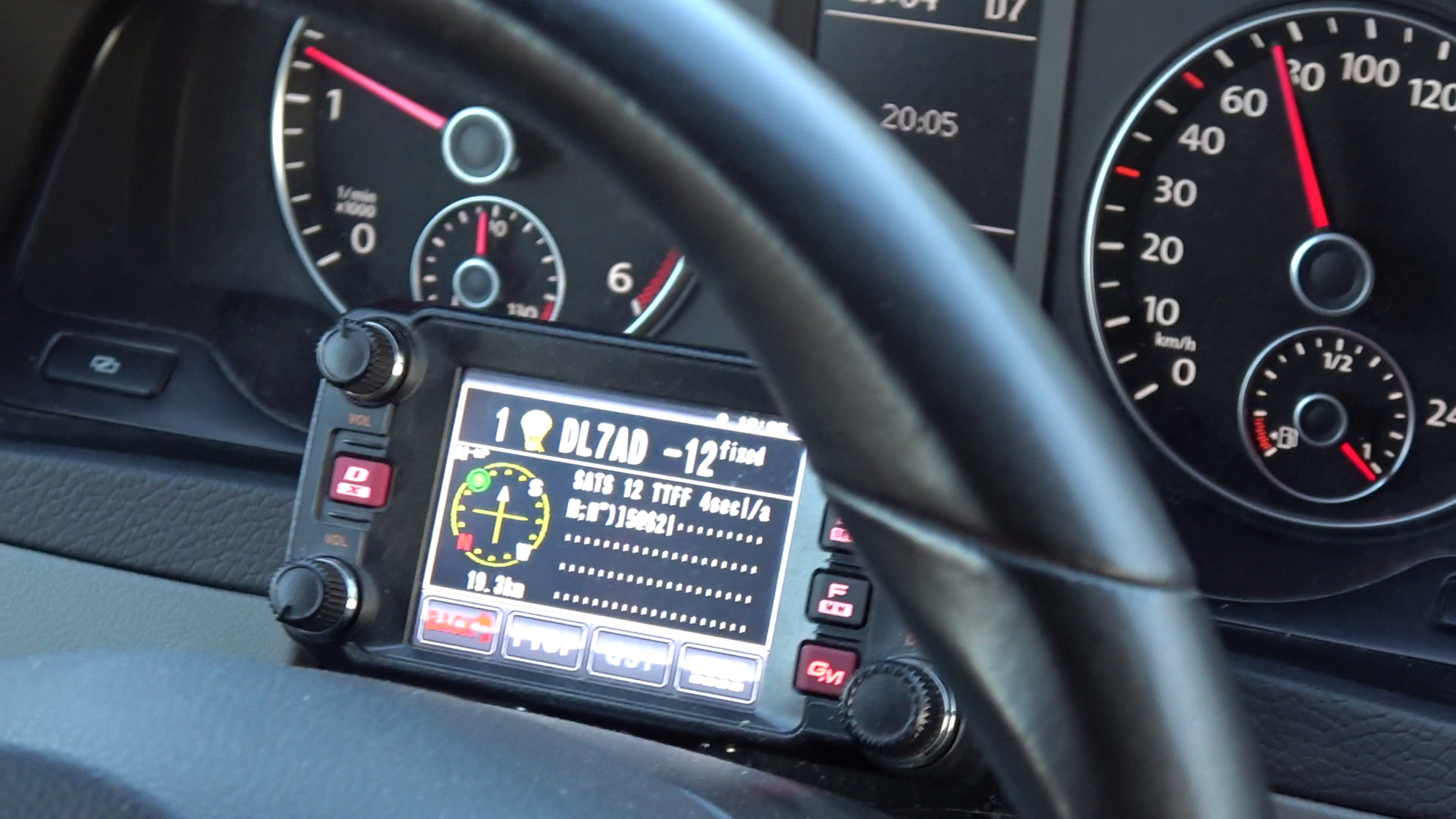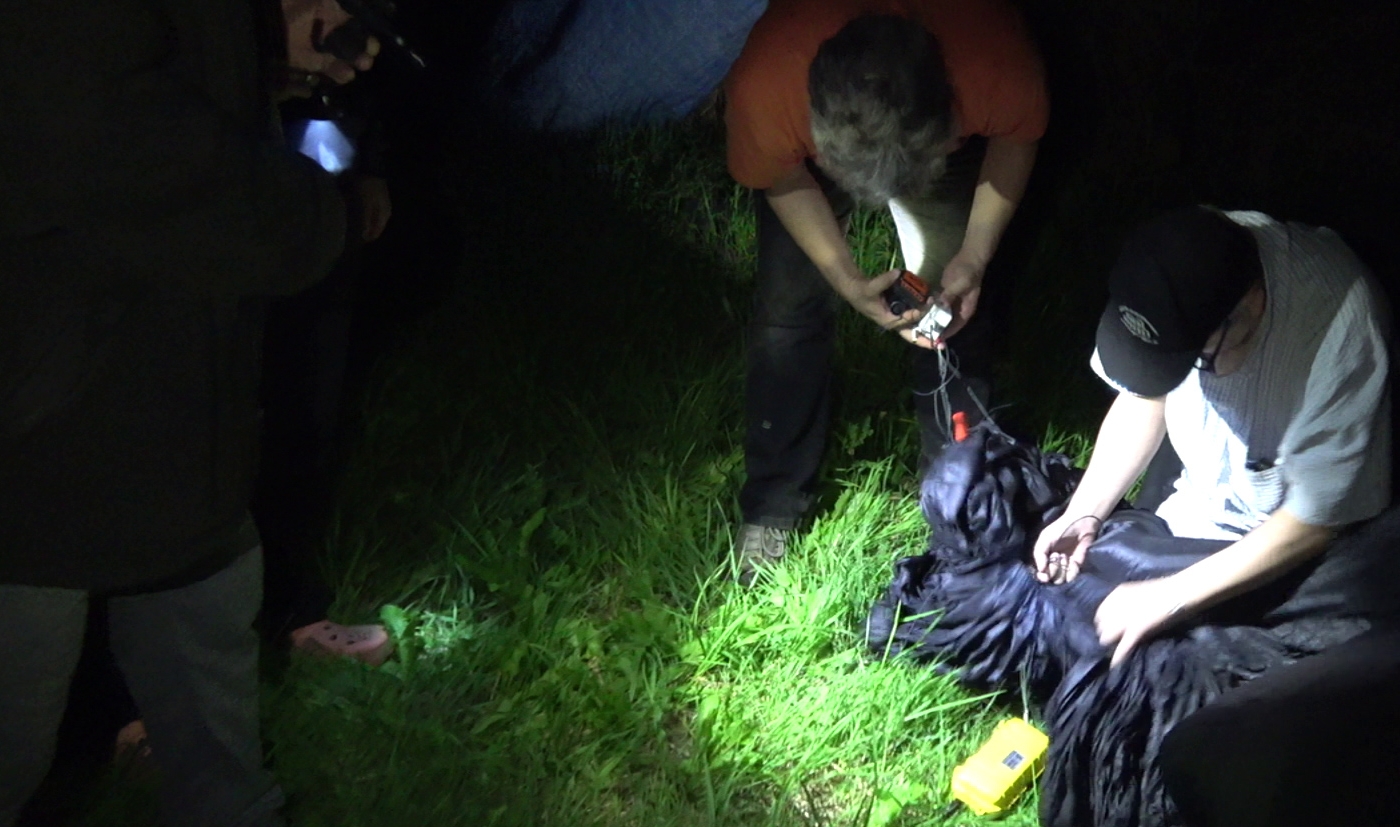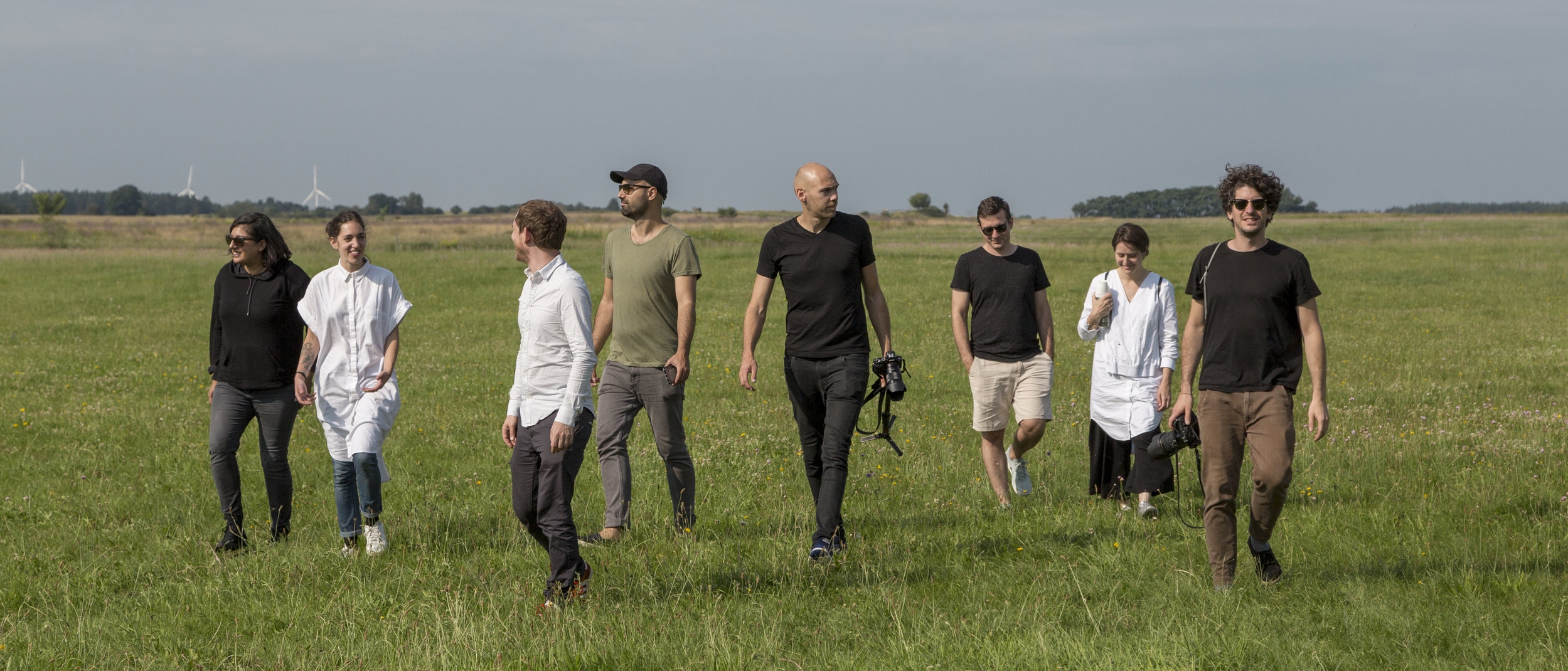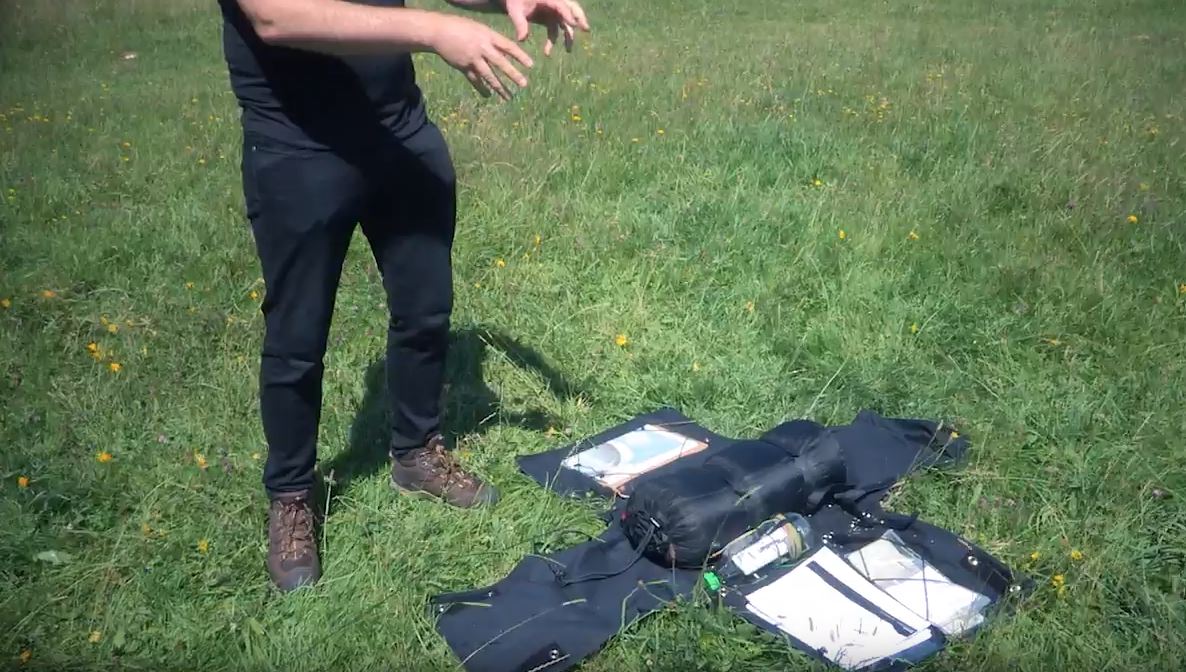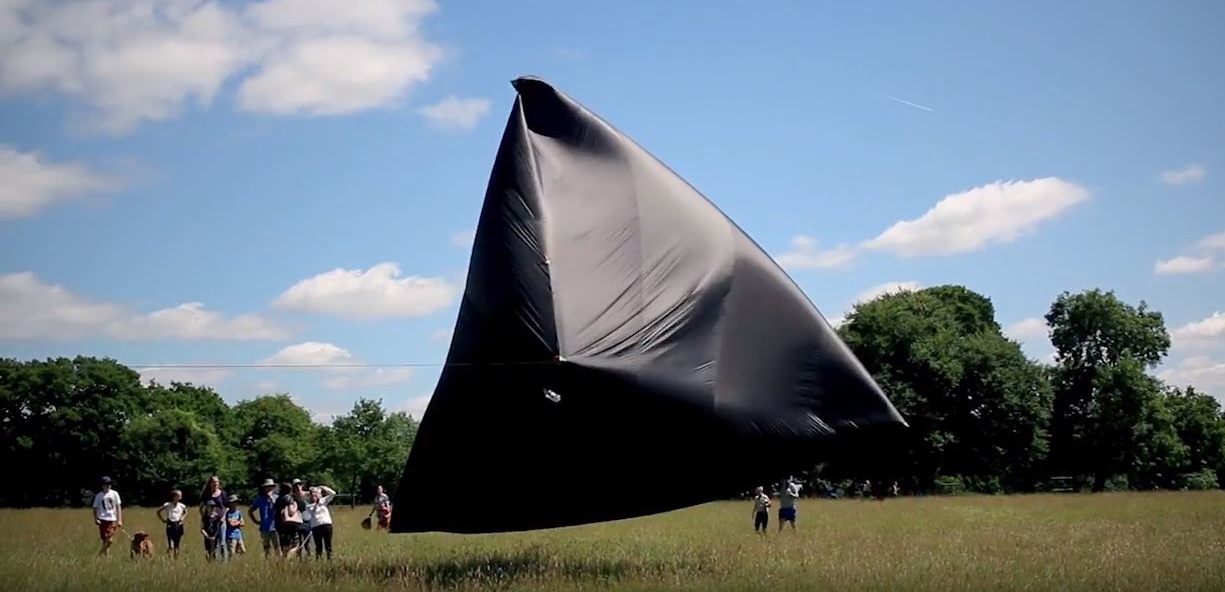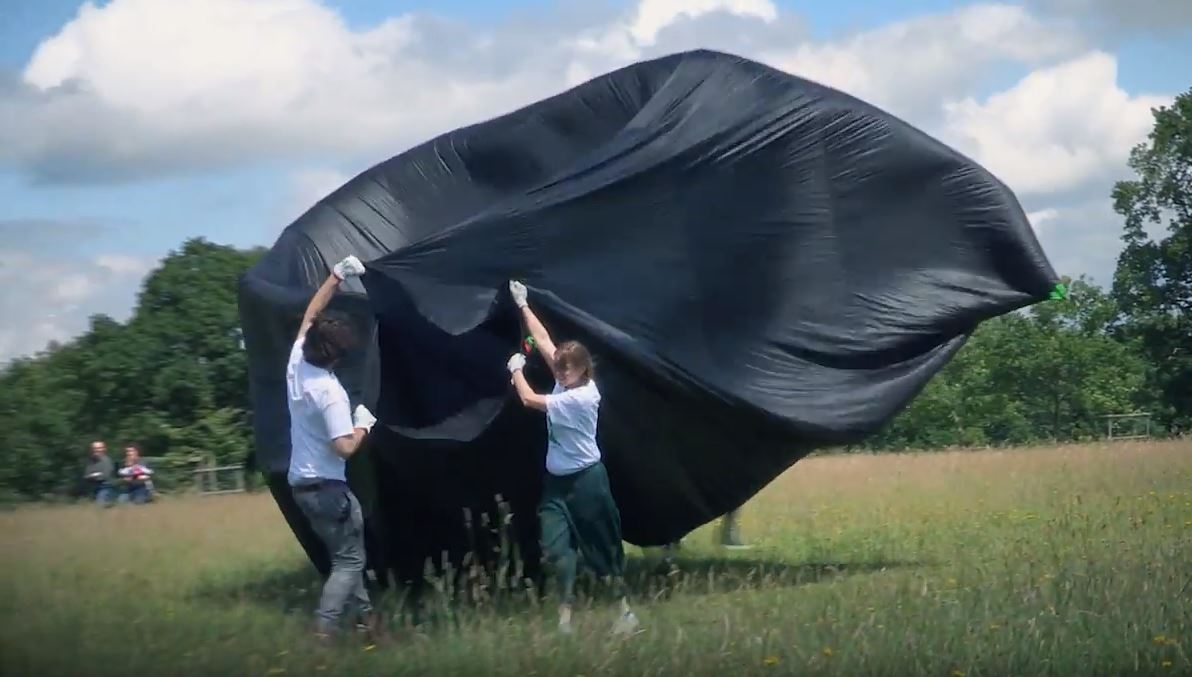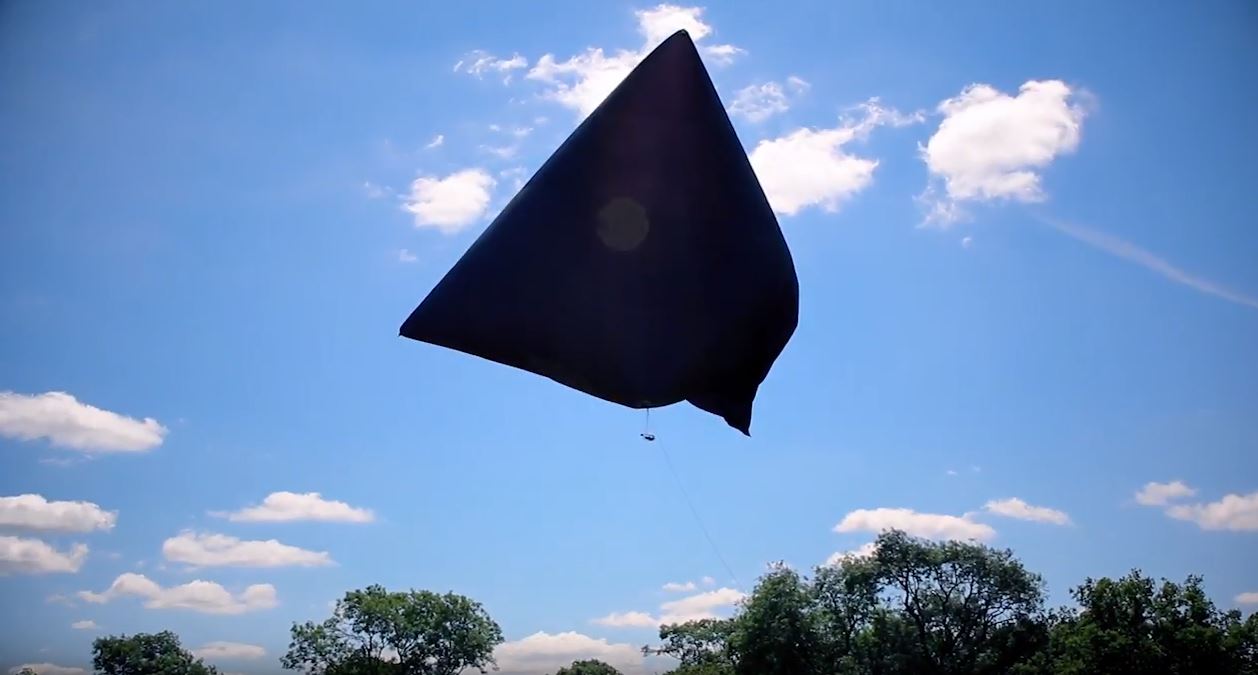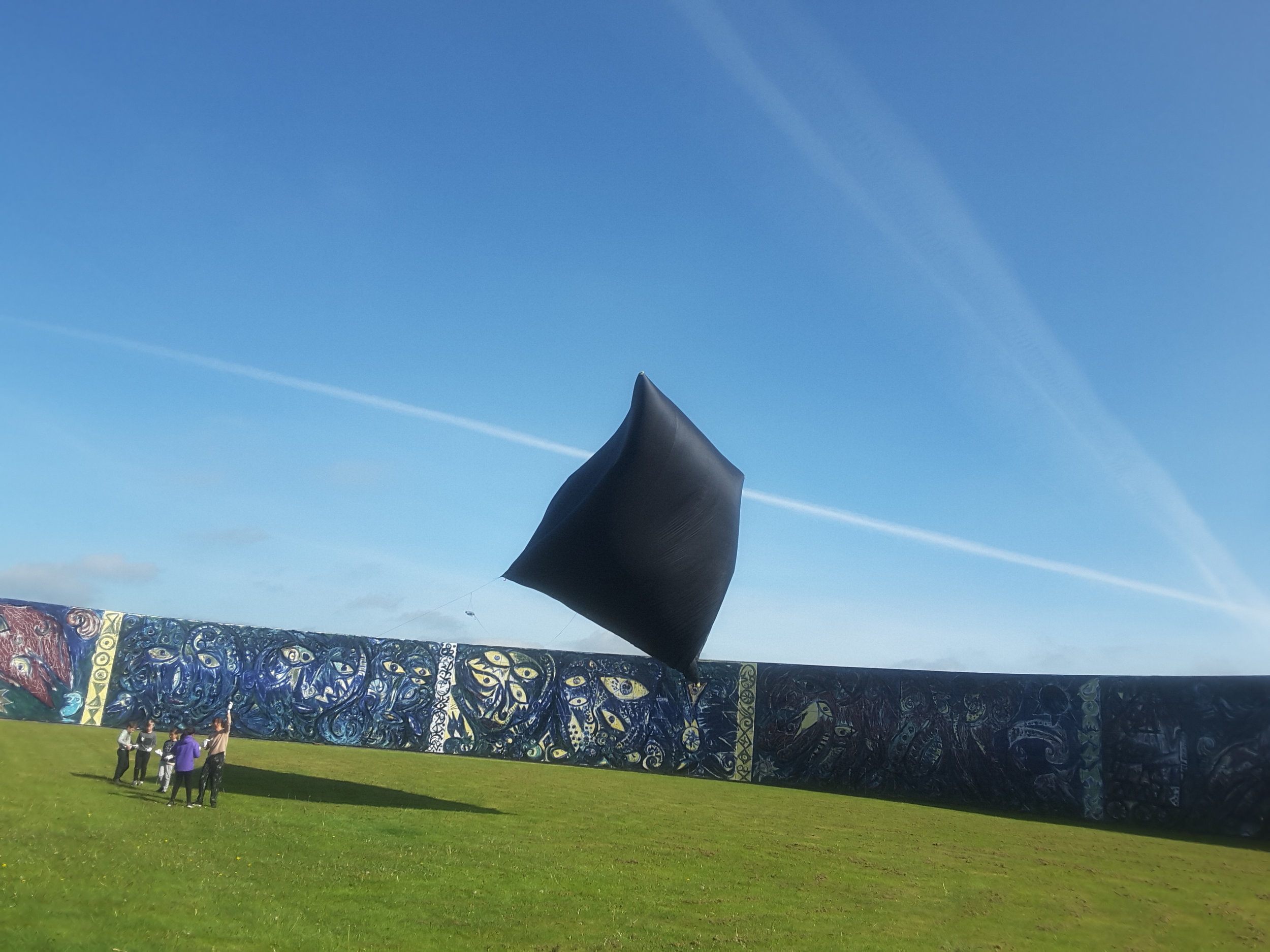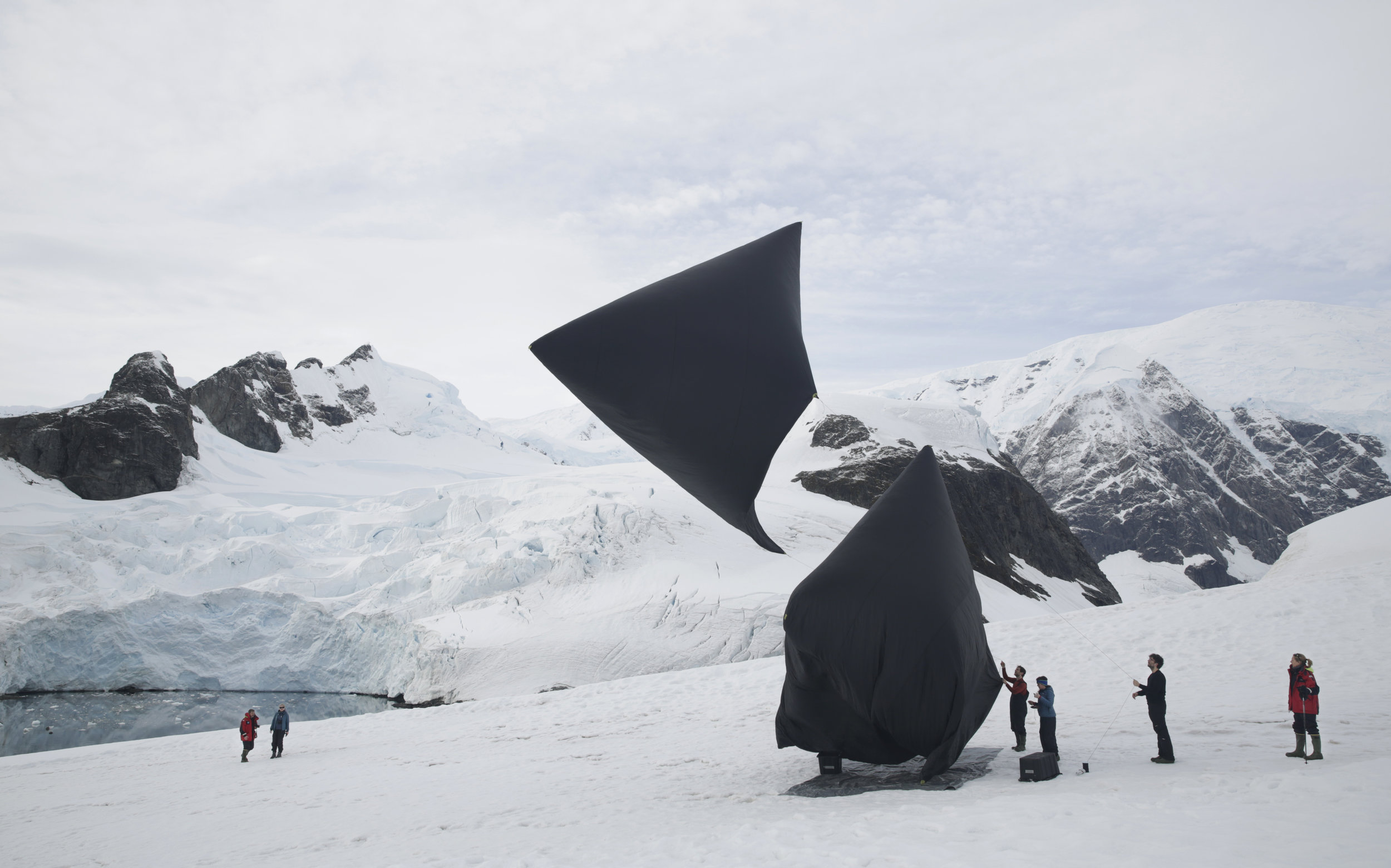Aerocene Explorer Tethered flight at Mobile Utopia Conference
2 November 2017
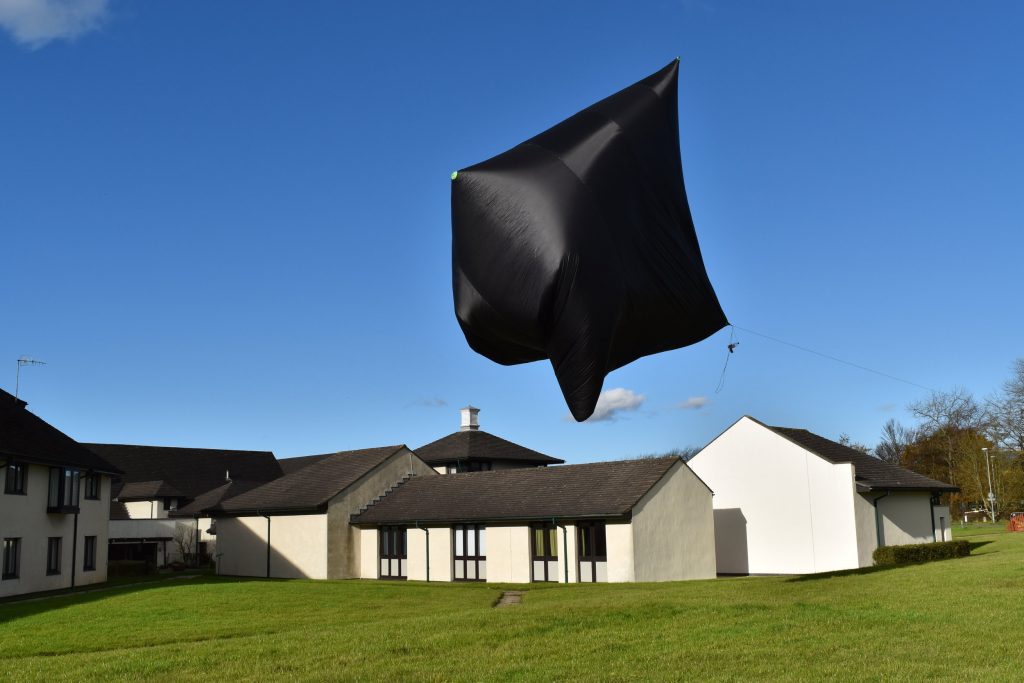
LANCASTER, UNITED KINGDOM
54°00’21.0″N 2°47’15.0″W
On November 2nd Sasha Engelmann, Bronislaw Szerszynski and Grace Pappas performed an Aerocene Explorer tethered flight in Lancaster, UK, within the framework of a two-day “Mobile Utopia Experiment” called “The Drift Economy”, that Bron and Sasha co-organized. The Drift Economy workshop was held at the Lancaster City Library on November 1st, and at the Lancaster University InfoLab on the morning of the 2nd. Participants joined Bron and Sasha in experimenting with drifting seeds, VR-experiences of drift, and ‘mapping drift’ onto a three dimensional diorama of Lancaster’s topography. The Drift Economy was an experiment in public participation in an alternative mobility regime based on the existing flows of water, air, slopes, soil and elemental processes.
Aerocene was a primary element in the Drift Economy experiment, as well as in the conference session and panel that Bron and Sasha chaired at the Mobile Utopia Conference.
In the context of the continuing expansion of fuel-intensive air travel and the militarization, securitization and commercialization of atmospheric space, the experimental workshop and the conference session were devoted to exploring how humans might develop an ethical and sustainable relationship with the atmosphere through vernacular ways of sensing, understanding and collaborating with the macro- and micro-dimensions of air.

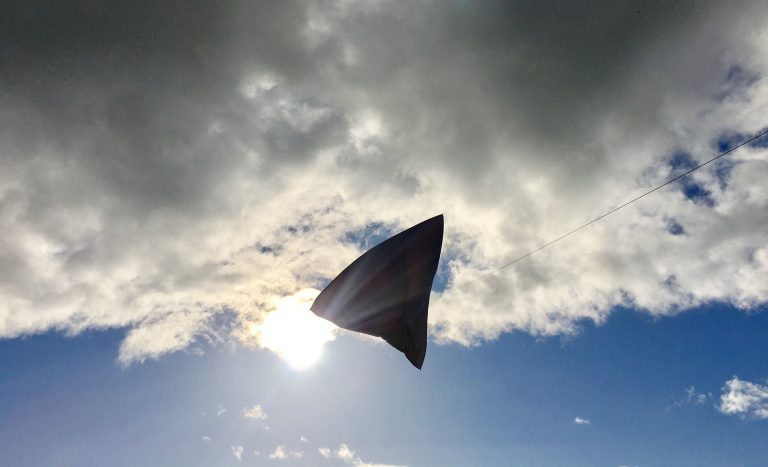
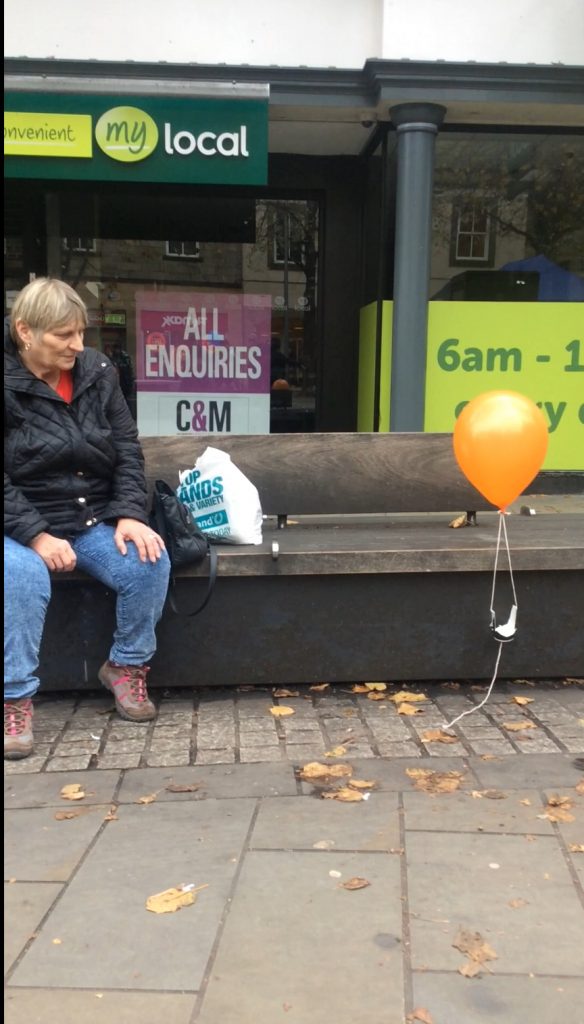
The approach to critical atmospheric utopias was inspired by Aerocene, inviting a tactile, unmediated skilling of atmospheric awareness. In its name, Aerocene also deliberately evokes the possibility of an epochal shift in humanity’s relation with its home planet, and indeed in the very way that the Earth populates its atmosphere with moving things.
At around noon on the 2nd of November, Grace and Sasha inflated the sculpture on an open field near the conference venue. As they were attaching the GPS tracker to the Aerocene sculpture, Rob La Frenais joined them on his bike. Later in the conference, during his Keynote speech, Rob spoke about the Aerocene flight that had happened that day, and related it to the White Sands launch of D-OAEC Aerocene that occurred in 2015.
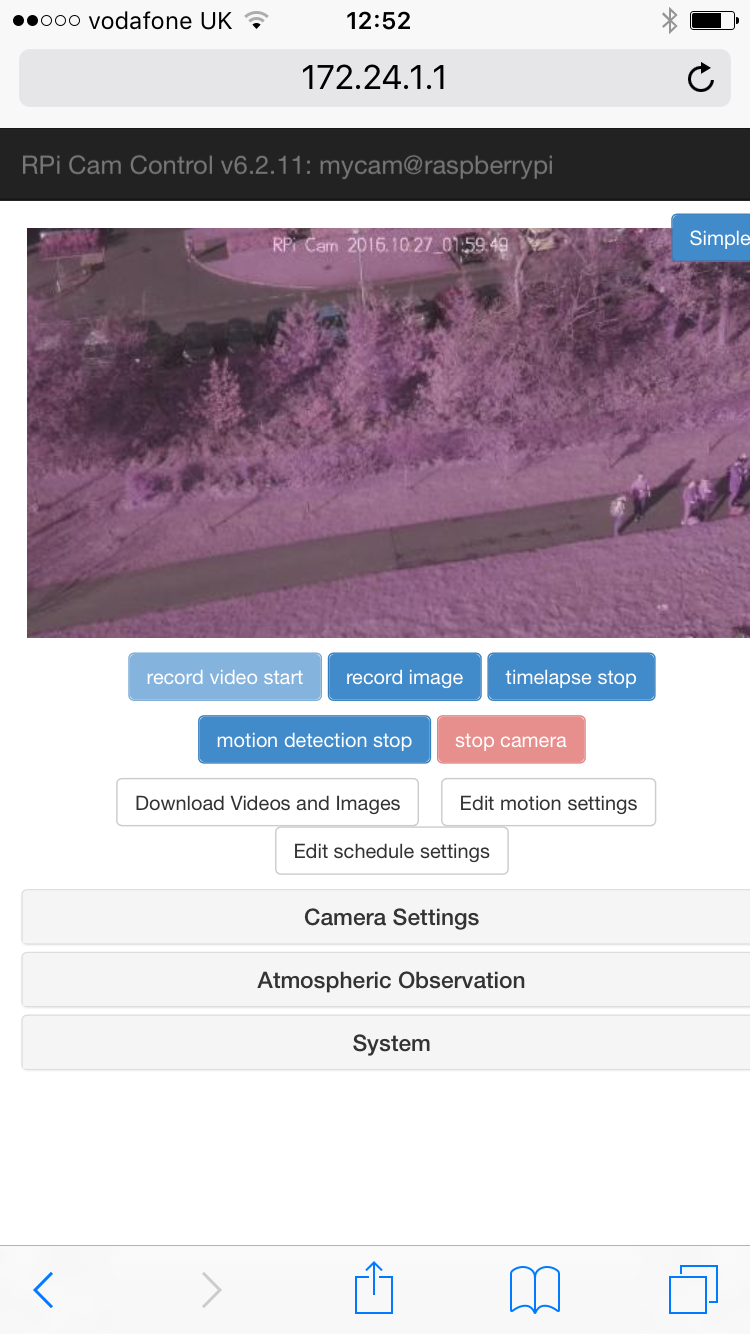
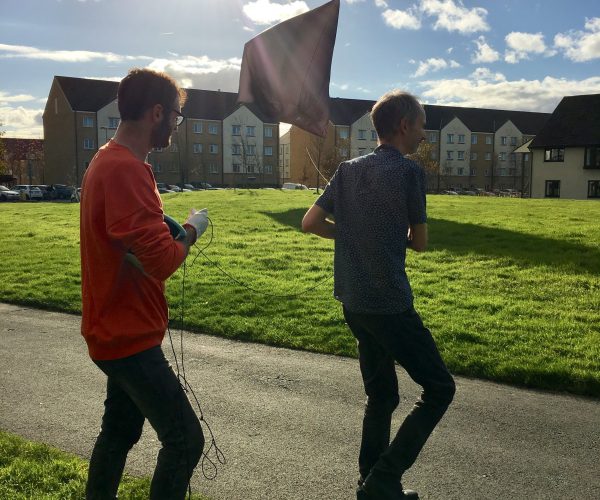

Luckily for the launch team, the weather was particularly benign on that day -except for a little wind – and the Aerocene Explorer floated in the atmosphere immediately, while recording track information with a handheld GPS attached to it. Sasha and Grace took turns flying the sculpture, and then Sam Hertz, who had just arrived at the conference, flew the Aerocene with Bron.
The Sculpture flew over an hour, overseen by over 60 people who gathered for the launch, registering a complicated aero-glyphic that was later processed with Garmin Basecamp and Google Earth into a striking visualization. Participants connected to the Aerocene Explorer wifi hotspot and connected to the Aerocene’s onboard camera to ‘see’ what the sculpture was seeing. During her train travel back to London that evening, and on the way back up to Lancaster the following morning, Sasha downloaded the flight data from the launch and made some early attempts at a Google Earth flight visualization with the help of Joaquin.

The experience of the Aerocene launch resonated into the conference session during the following days. The “Atmospheric Adventures in the Aerocene: heterotopias of aerial mobility” conference panel on the 3rd November included presentations by Bron, Sasha and Sam Hertz. It also included a short film, “Points of Presence” made by Adam Fish, Bradley Garrett and Oliver Case. Rob La Frenais was the ‘discussant’. The panel was guided by the following questions:
How can we invent and employ accessible, modest aerial experiments to arrive at an ethical engagement with the atmosphere?
What tools, skills, imaginaries and alliances do we need to develop to become more sensitive to the objects and vibrations passing through the atmosphere around us?
How can we populate the air in ways that enhance rather than diminish atmospheric affordances for different forms of life?
The response from the panel and the subsequent discussions with many scholars, researchers, artists, technologists and engineers was a clear indication of the way that the Aerocene launch and the panel discussion had catalyzed a range of reflections and insights at the Mobile Utopia conference. Indeed, many commented that it was the most expressive, ethical and collective ‘mobile utopia’ among the countless other proposals circulating in the air in Lancaster.
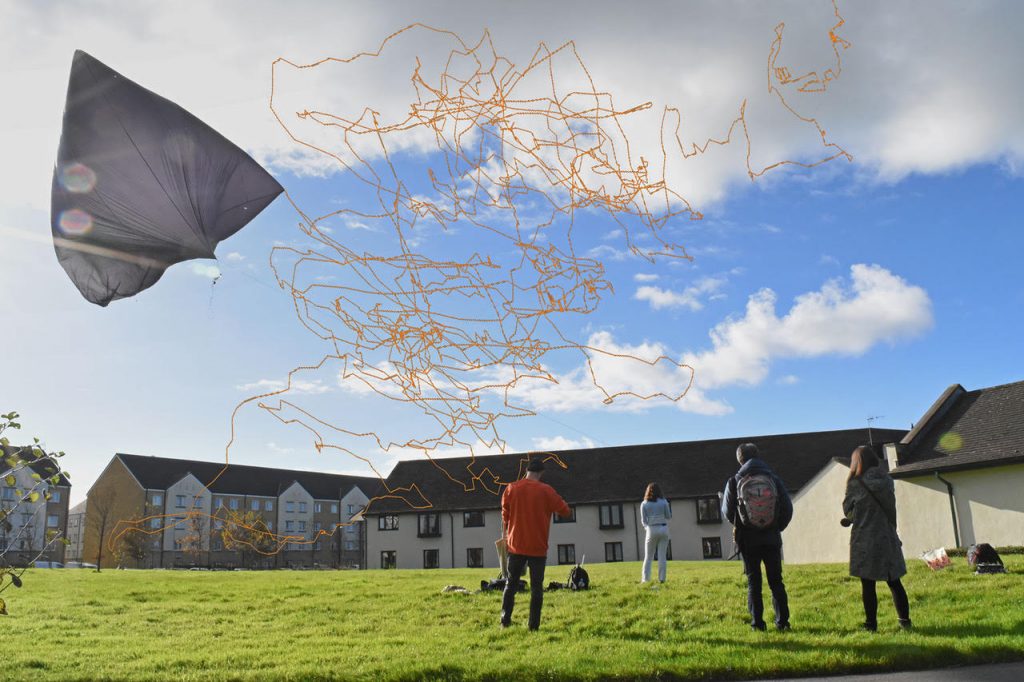
Sasha Engelmann would like to thank the Aerocene foundation for lending the sculpture to Aerocene friends in the U.K., Bron for coordinating their amazing Drift Economy experiment in Lancaster, Daniel Schulz for preparing the Explorer and checking all the components with Sasha during the summer, and Joaquin who was a fantastic (!) help with the Garmin device & software. Also Grace traveled over two hours from London to join the launch on that day and was incredibly super helpful in flying, communicating and documenting the Aerocene project to everyone involved.
Organizer: Sasha Engelmann
Drift Economy Experiment: Bronislaw Szerszynski, Sasha Engelmann and Adam Fish
Aerocene Explorer borrowed from Aerocene Foundation
Communication: Camilla Berggen Lundell (Aerocene Foundation) and Alice Lamperti our amazing intern at STS
Aerocene Explorer set-up and support: Daniel Schulz (STS)
Aeroglyphics tutorial and support: Joaquin Ezcurra (Aerocene Foundation)
Payload experiments: Grace Pappas

